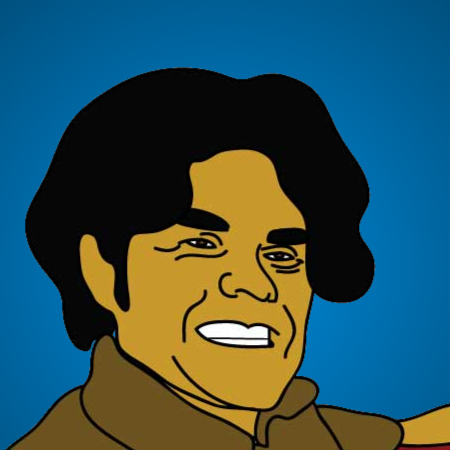Crosswords: A General Intelligence Challenge?
I have become obsessed with crossword puzzles, specifically the NYT crosswords, since my friend Ralph Crewe gently forced me to start doing them. Although I’m not still at his level, I’ve been working on them daily and getting noticeably better.
In doing so I’ve come to realize they are a fantastic mechanism for testing generally capable problem-solving, and in this post would like to explain the various types of challenges they present. I’ll be using past NYT crossword puzzles as examples (they’re all at least a week old so should hopefully not be spoilers for anyone).
I hope this post inspires you in some way, be it to think of new challenges for generally capable models/agents or (even better!) to get you into solving these puzzles. If you read until the end, there are some prizes you could win :).
Beyond Scrabble
Although reminiscent of Scrabble, the possible solutions to Crossword puzzle clues are taken from a much, much larger set than the set of valid Scrabble words. Here are a few clues, their answers, and what makes them different from Scrabble words (taken from the January 18, 2021 puzzle):
- Boxing venue (5 letters): ARENA. A valid Scrabble word.
- Russian “no” (4 letters): NYET. A non-English word.
- City where you won’t find the Parthenon (10 letters): ATHENSGEORGIA. Two words, the name of a place (not allowed in Scrabble), and a tricky clue for a Monday (bit fit the theme of the puzzle, more on that later).
- CPR pro (3 letters): EMT. An abbreviation.
- I.R.S. agent, quantily (4 letters): TMAN. Mixture of two words and an abbreviation, and mostly a colloquial phrase.
Weekly patterns (curriculum learning)
One of the cool things about the NYT crossword puzzles is that they get increasingly harder sa the week progresses: Monday puzzles are the easiest, Saturdays are the hardest, and Sundays are the biggest (but apparently at a mid-week difficulty-level); I think the Thursday puzzles are actually the most fun (more on that later).
Compare Monday and Saturday clues from the same week:
- The Lone Star State (Monday, 5 letters): TEXAS
- C-worthy (Saturday, 4 letters): SOSO
Of course, not all Monday clues are that easy and not all Saturday clues are that hard, but there is a clear difference between the two. This pattern of increasing difficulty is repeated each week.
Curriculum learning, anyone?
Letter limits (constraint satisfaction problems)
Solving crosswords is ultimately a constraint satisfaction problem: while there are many words that could be valid solutions, they need to have fit in the provided blank squares, and they have to fit with the clues going in the orthogonal direction. Consider the following clue from the January 5, 2021 puzzle:

There are a number of possible 6-letter solutions we could consider, including “pop hit”, “big hit”, and “top hit”. But when we start filling in some of the Down clues:
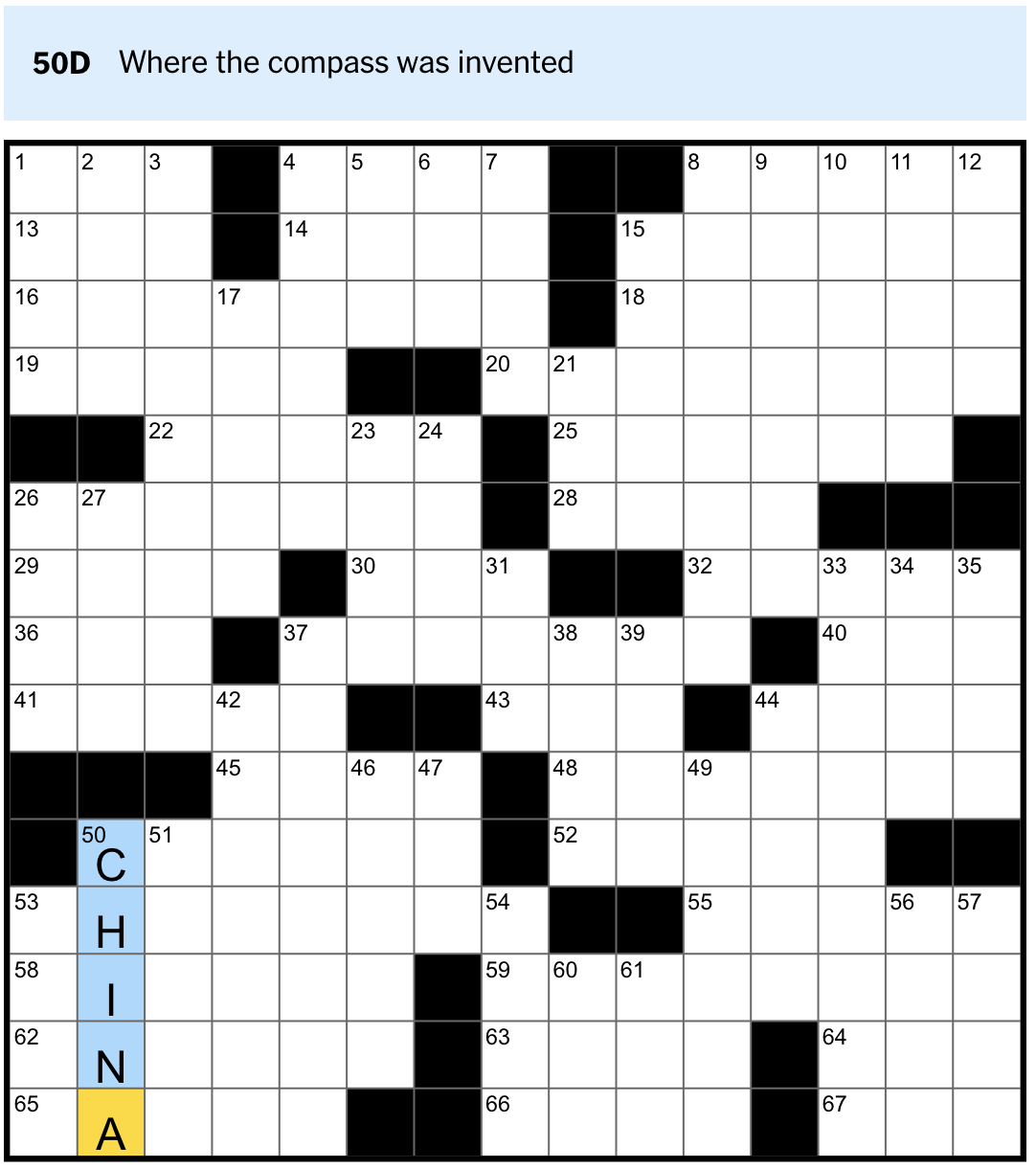
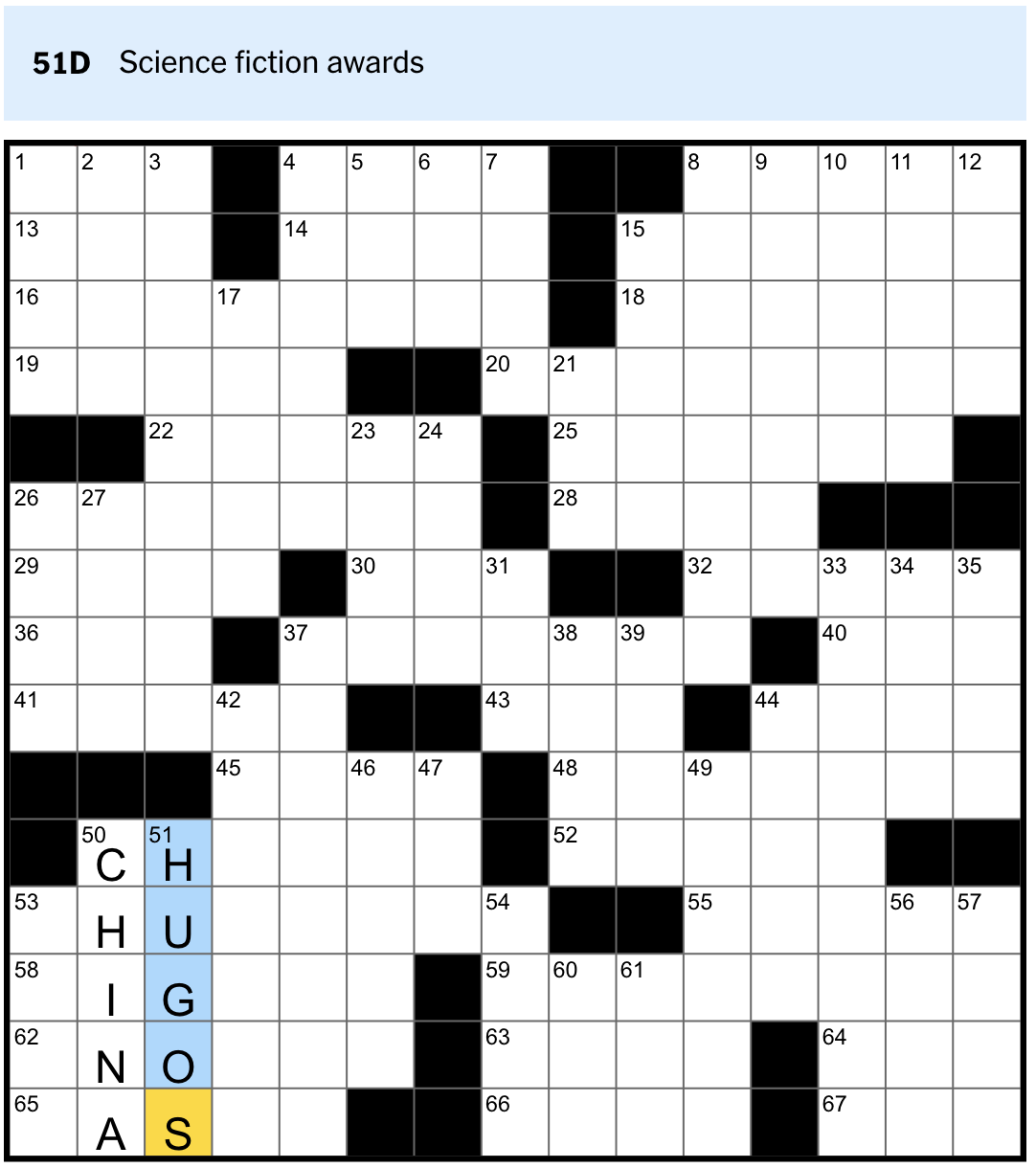
we start to see that “big hit” is the only one that fits of the options we were considering (and is, in fact, the correct answer).
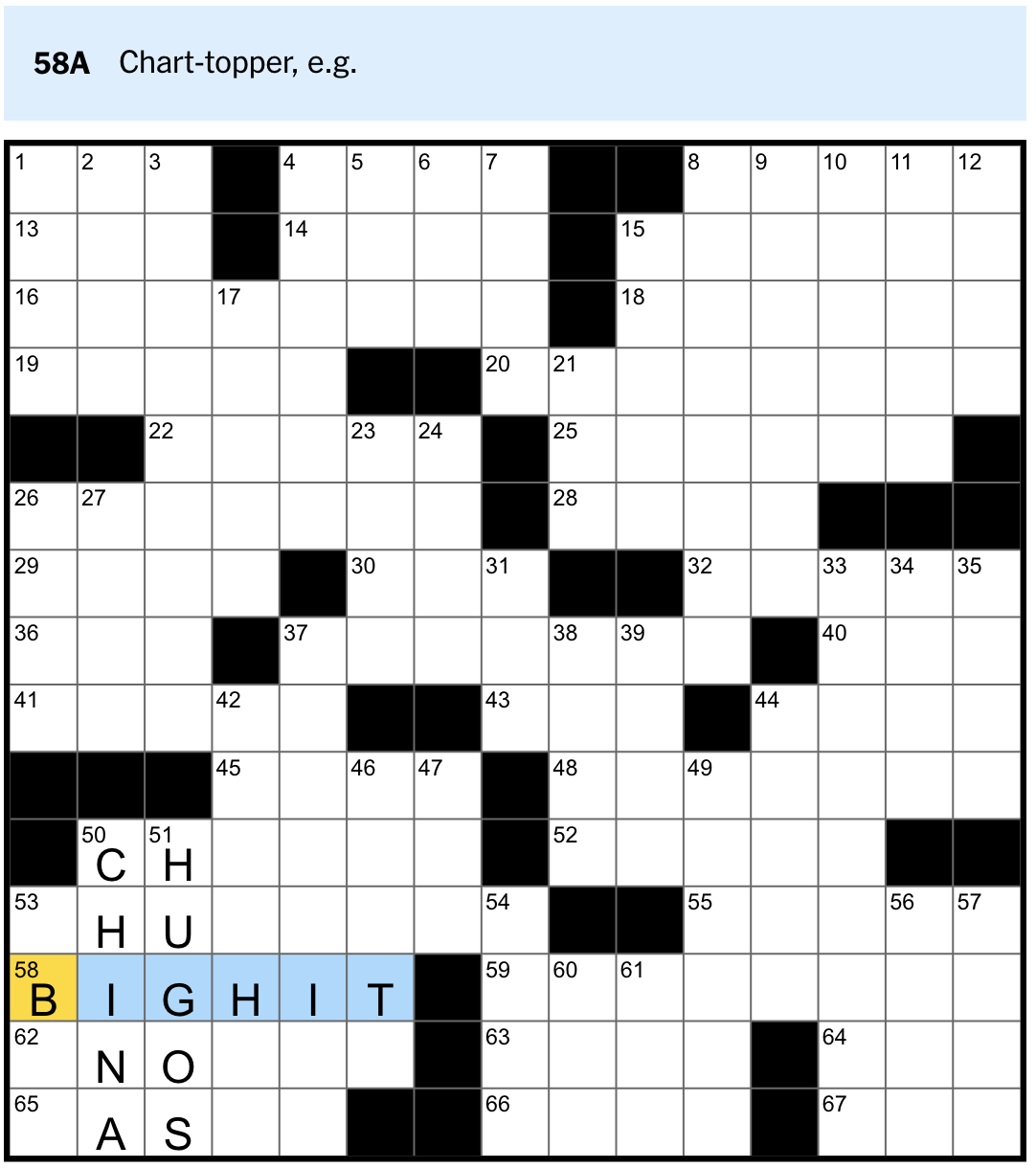
Being “well-versed” (knowledge databases)
The more “general knowledge” you know, the better you will be at solving crosswords. This includes all types of knowledge such as history (both ancient and recent), geography, sports, music, cinema, etc. Take, for example, the following clues and answers from the January 6, 2021 puzzle:
- Actor Poitier (6 letters): SIDNEY (Historical showbiz)
- Cowboy’s lasso (5 letters): RIATA (Knowing (somewhat niche) job-specific lingo)
- Holy scroll (5 letters): TORAH (Knowing about various religions)
- City near Leeds with historic walls (4 letters): YORK (Geography)
- Reproductive cells (3 letters): OVA (Biology)
- Best picture winner directed by Ben Affleck (4 letters): ARGO (Showbiz)
- 1950s-’60s entertainment group (7 letters): RATPACK (Historical pop culture)
- Spineless (5 letters): EBOOK (This one requires thinking “out of the box”, having the mental model that physical books have spines (but their electronic counterparts don’t), and having a sense of humour!
Crosswordese (memorization can help)
There are a few short answers that are frequently used in NYT crossword puzzles. As you get to know these, they become useful in solving the harder puzzles (since you can usually get those “for free”). Some of the ones I recognize pretty quickly now are “ORE”, “ARIA”, “ERNE”, and “EDDY”.
Although the clues do change, their general meaning does not; thus, a certain amount of memorization does help in this case!
Themes (higher-level structures)
Many puzzles have a theme that, once you figure it out, can help you solve some of the clues. For example, take the following clue from the January 18, 2021 puzzle:
- City where you won’t find Virgil’s Tomb (13 letters)
On its own it seems like any 13-letter city could fit, and in general seems like a very strange clue. However, if you already solved “Athens, Georgia” (see above) you would know these clues are using US cities with the same names as what the clue suggests. Since you’re “well versed”, you know both that Virgil’s tomb is in Naples, Italy, and that there is a city in Florida called Naples, yielding the correct 13-letter answer:
- NAPLESFLORIDA
The “pyramid” puzzle is also a great themed puzzle, where many of the answers relate to the theme (see grid structure section below).
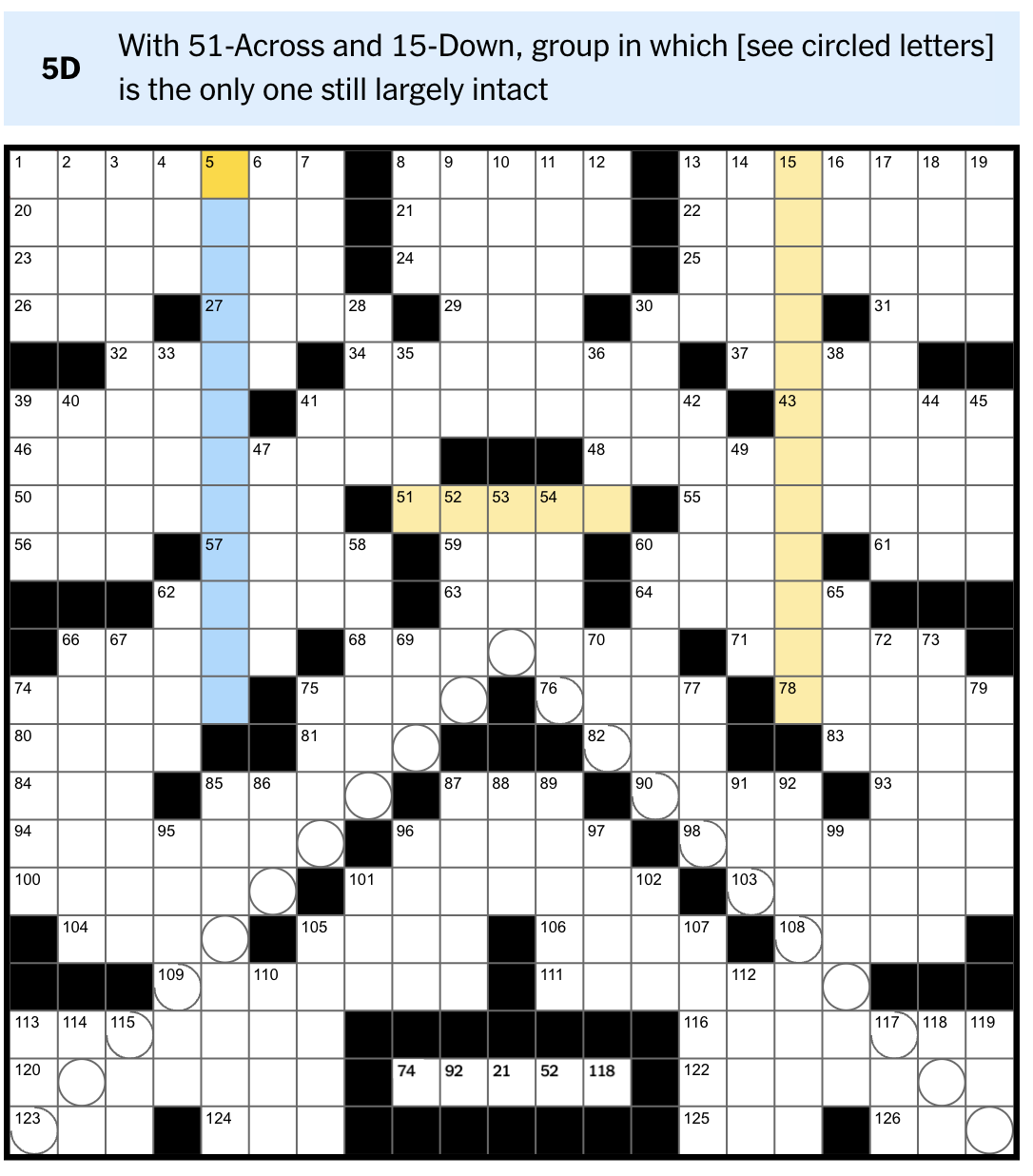
Sundays are always(?) themed and (I think) are the only day where the puzzle has a name (e.g. the theme). The Sunday puzzle on February 6, 2022 was titled “Sci-Fi Showdown” and was really neat, as you could either enter STARWARS or STARTREK as your favourite sci-fi franchise (I went with STARWARS when I filled it 😊):
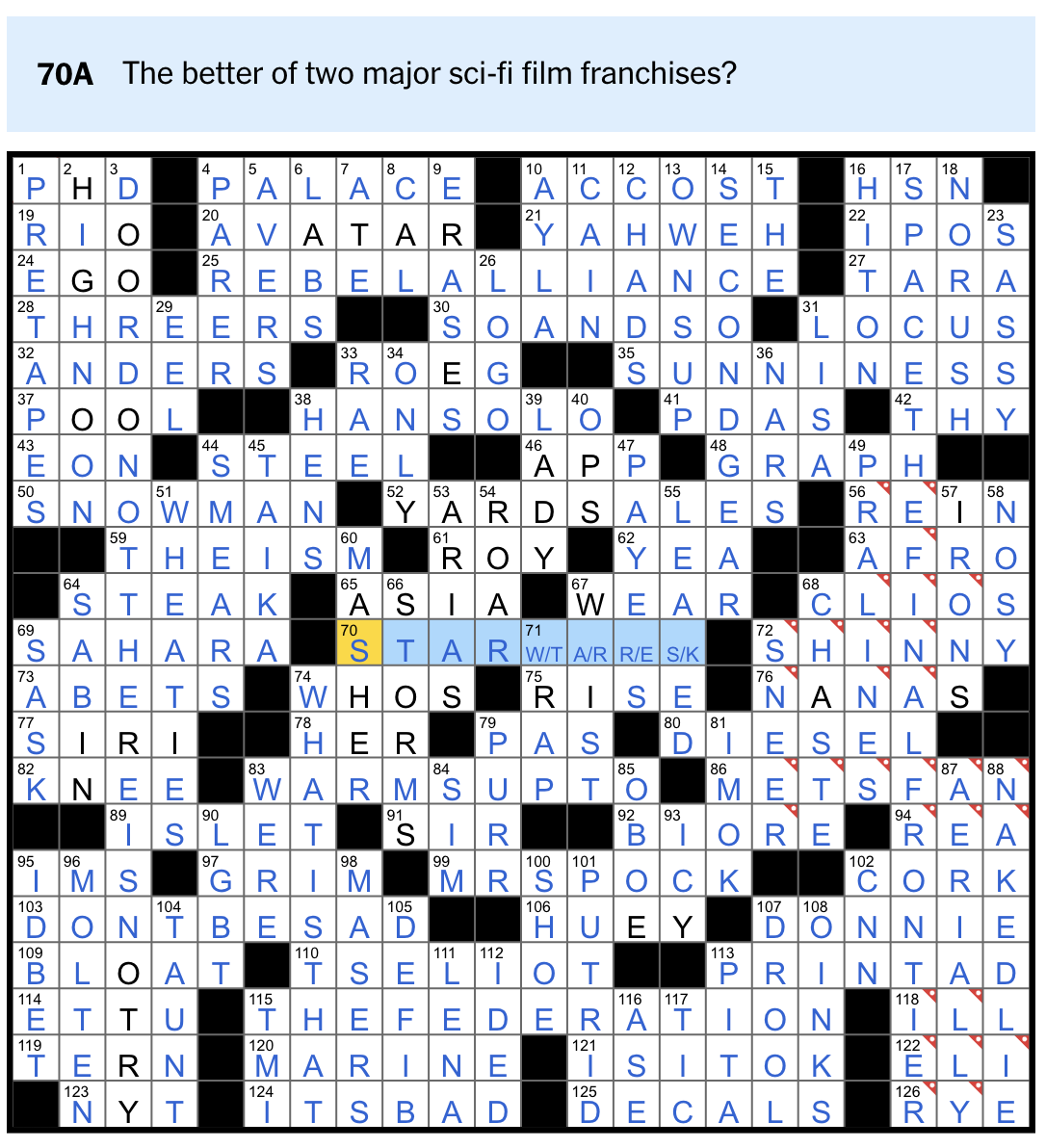
Many clues in the puzzle were related to that theme:
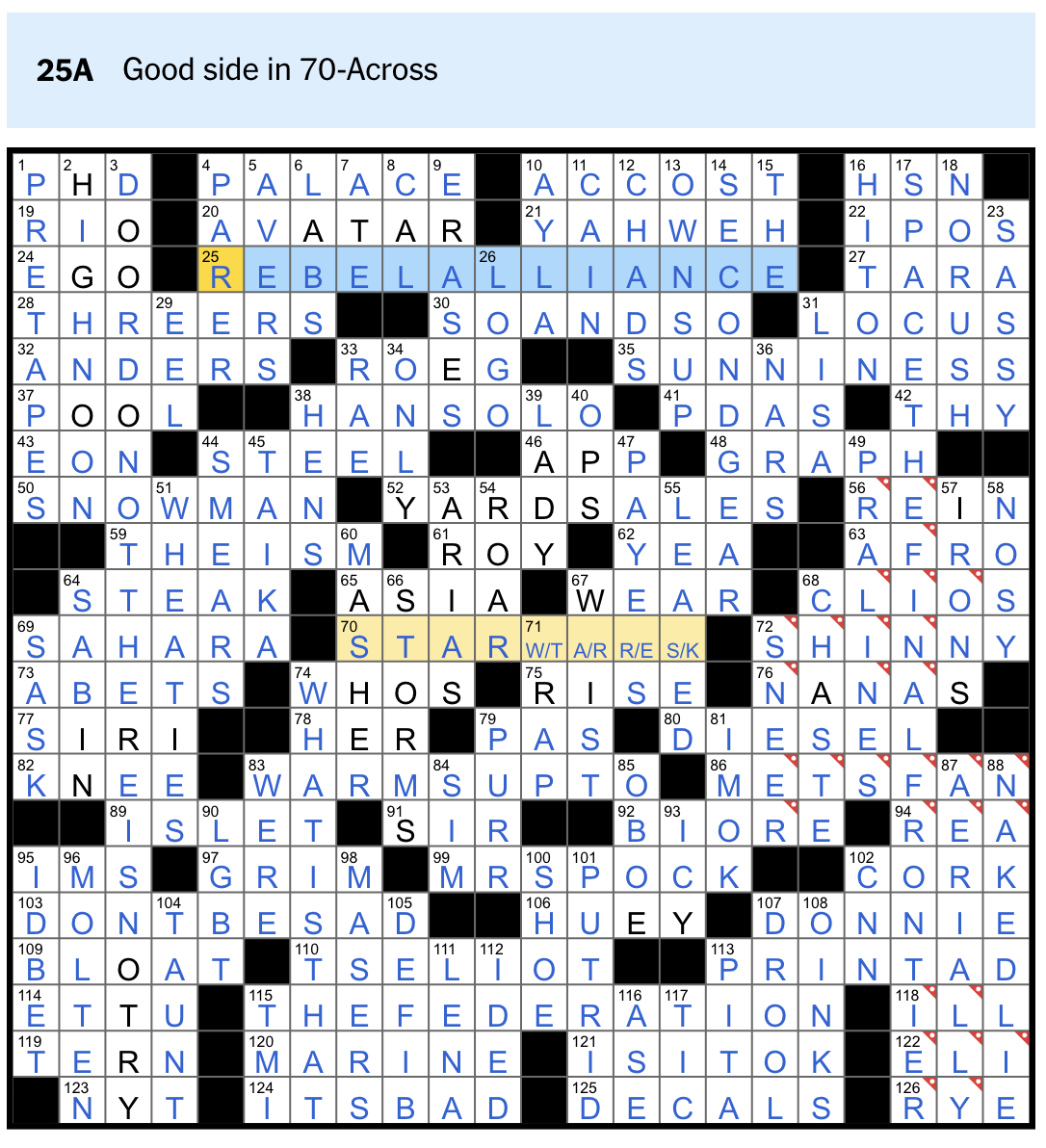
Grid structure (visual abstractions)
Sometimes the crossword grid itself is part of the clue. Here are a few examples I recently solved.
In the first, from October 12, 2020, we can see that the clue says the grid represents a place, and we can see that there are some grayed out squares and circles, which I initially mistook for windmills.
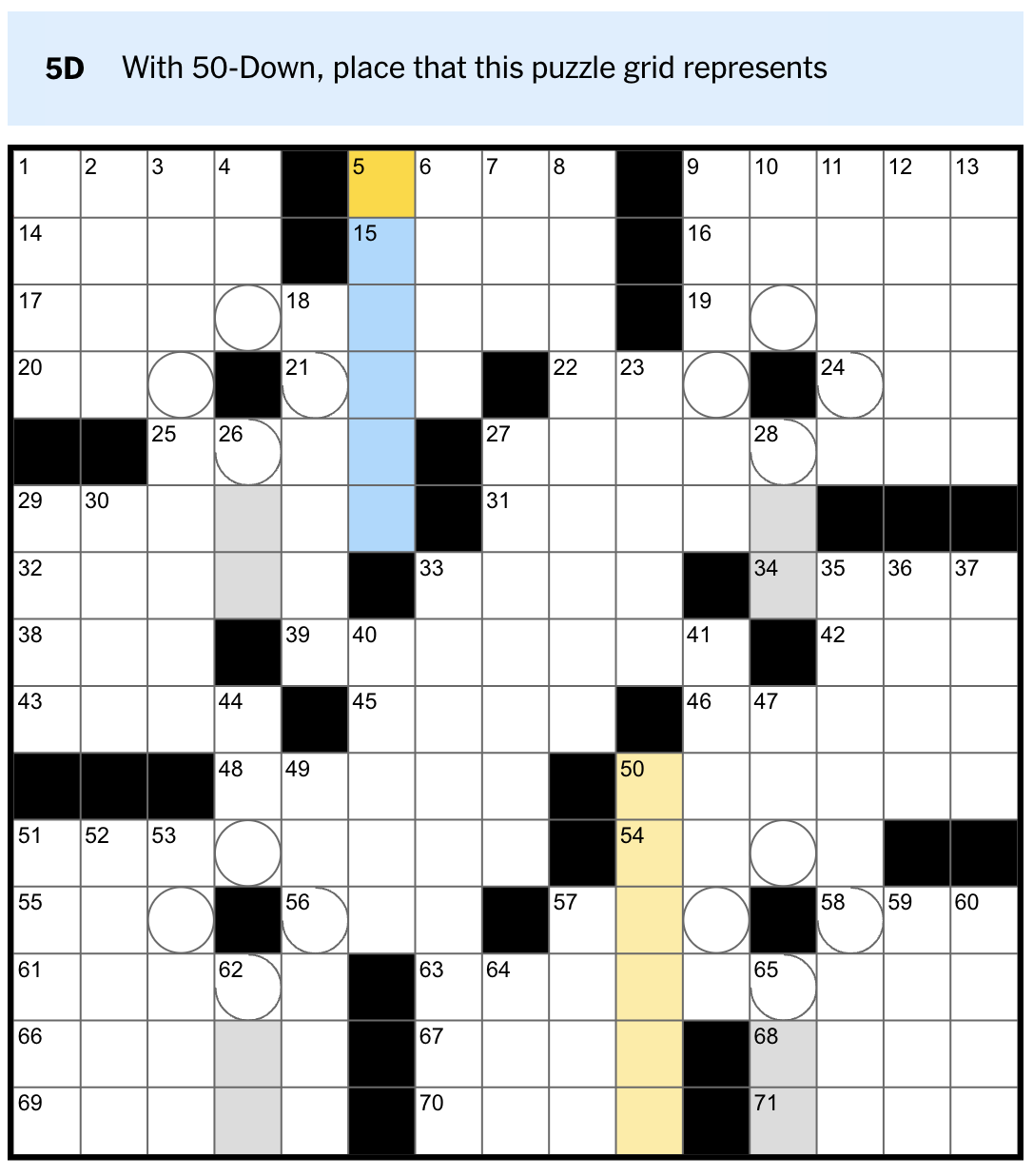
After completing a few of the across clues, I realized that they weren’t windmills,, but flowers!
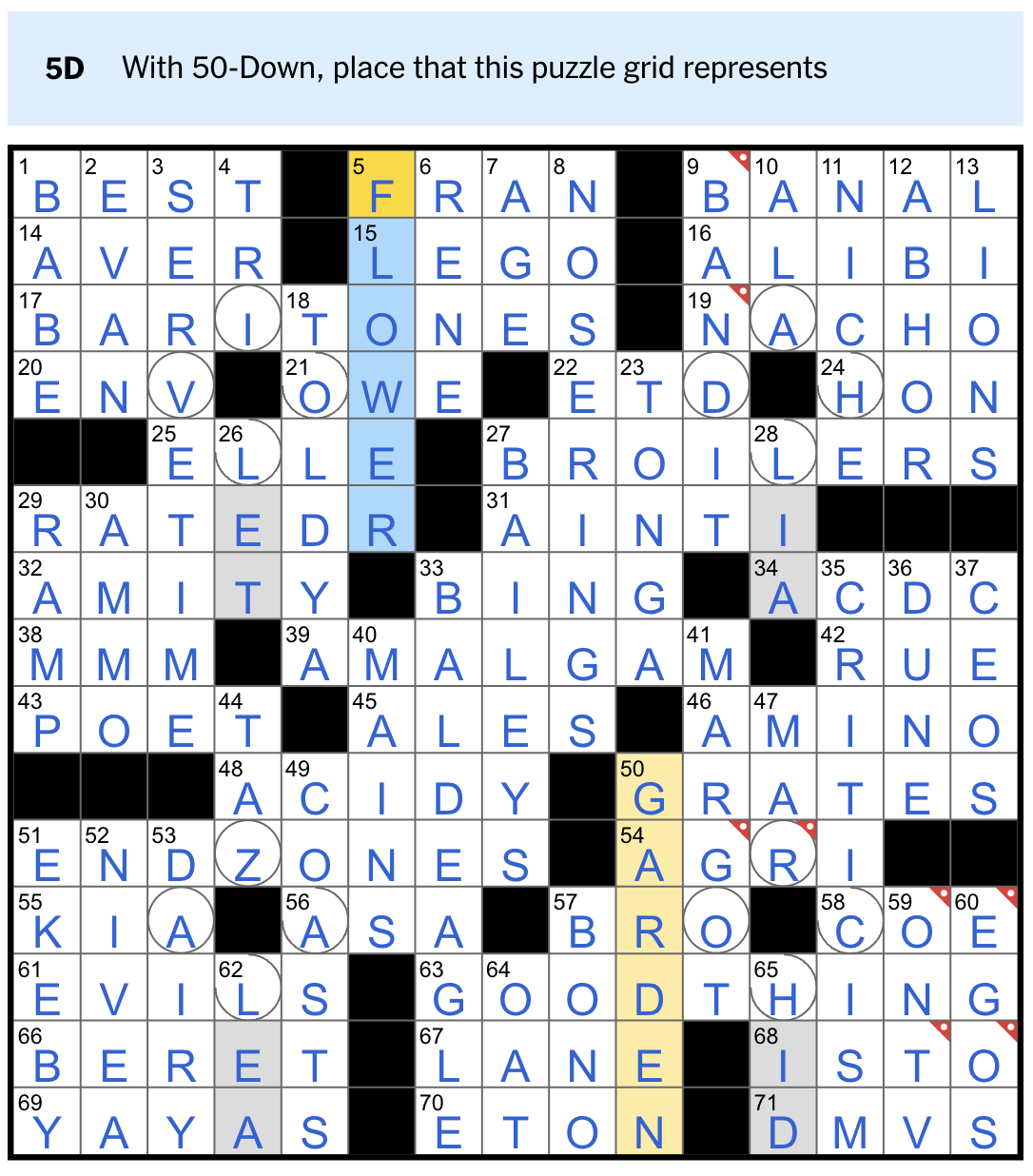
The next one, from March 22, 2022, we see that two magents are part of the black squares. The highlighted clue was reasonably easy (especially for me, since I used to like heavy metal as a kid):

Since IRON was “touching” the magnet, it gave me a pretty strong clue that IRON would be touching the other ends of the magnets, which turned out to be true:
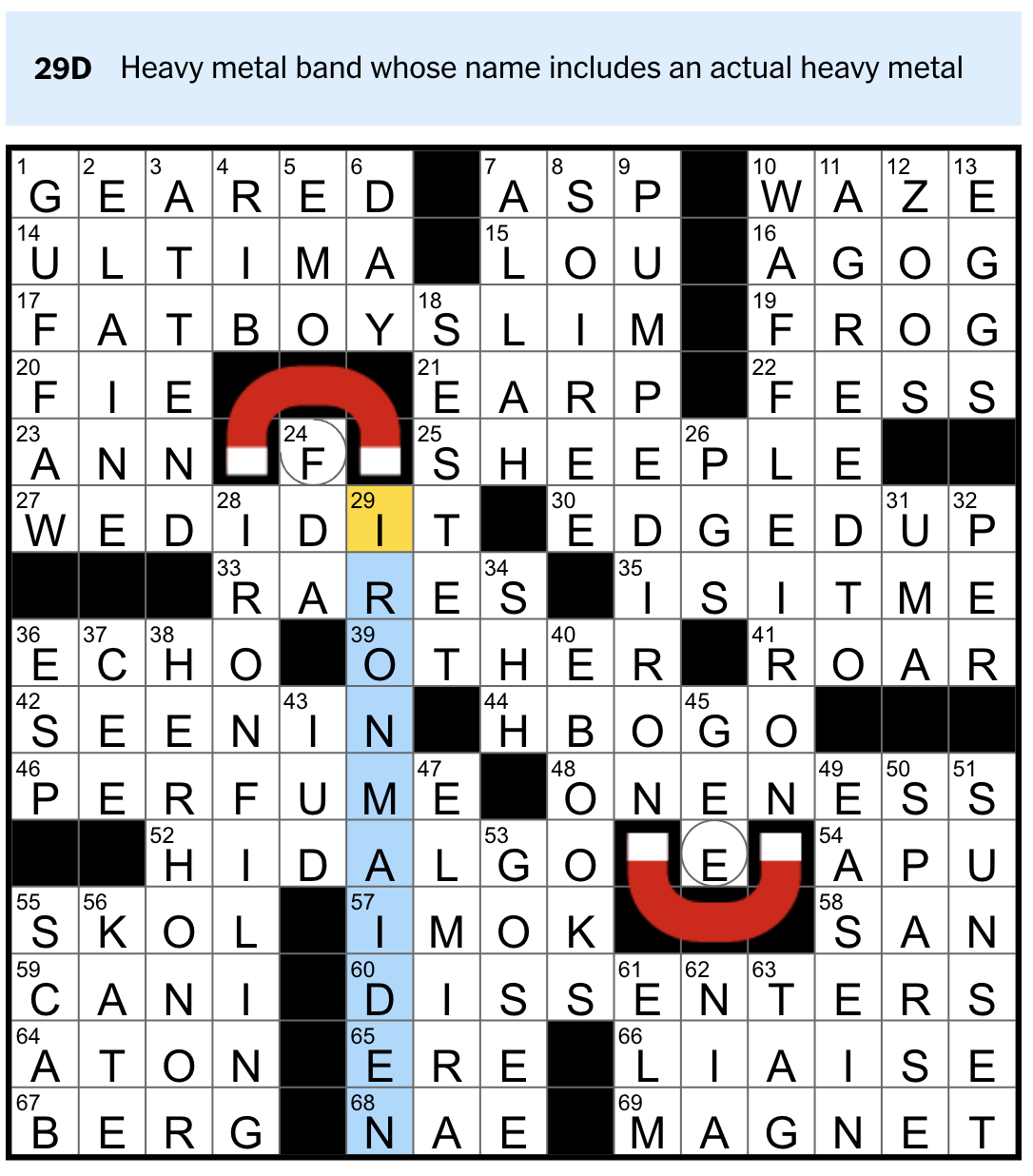
This one, from March 27, 2022, was pretty fun. The circles are drawing a pyramid, combined with the multi row/column clue is a strong hint as to what they’re referring to.

Here you can see the circles actually end up spelling THE GREAT PYRAMID OF GIZA!
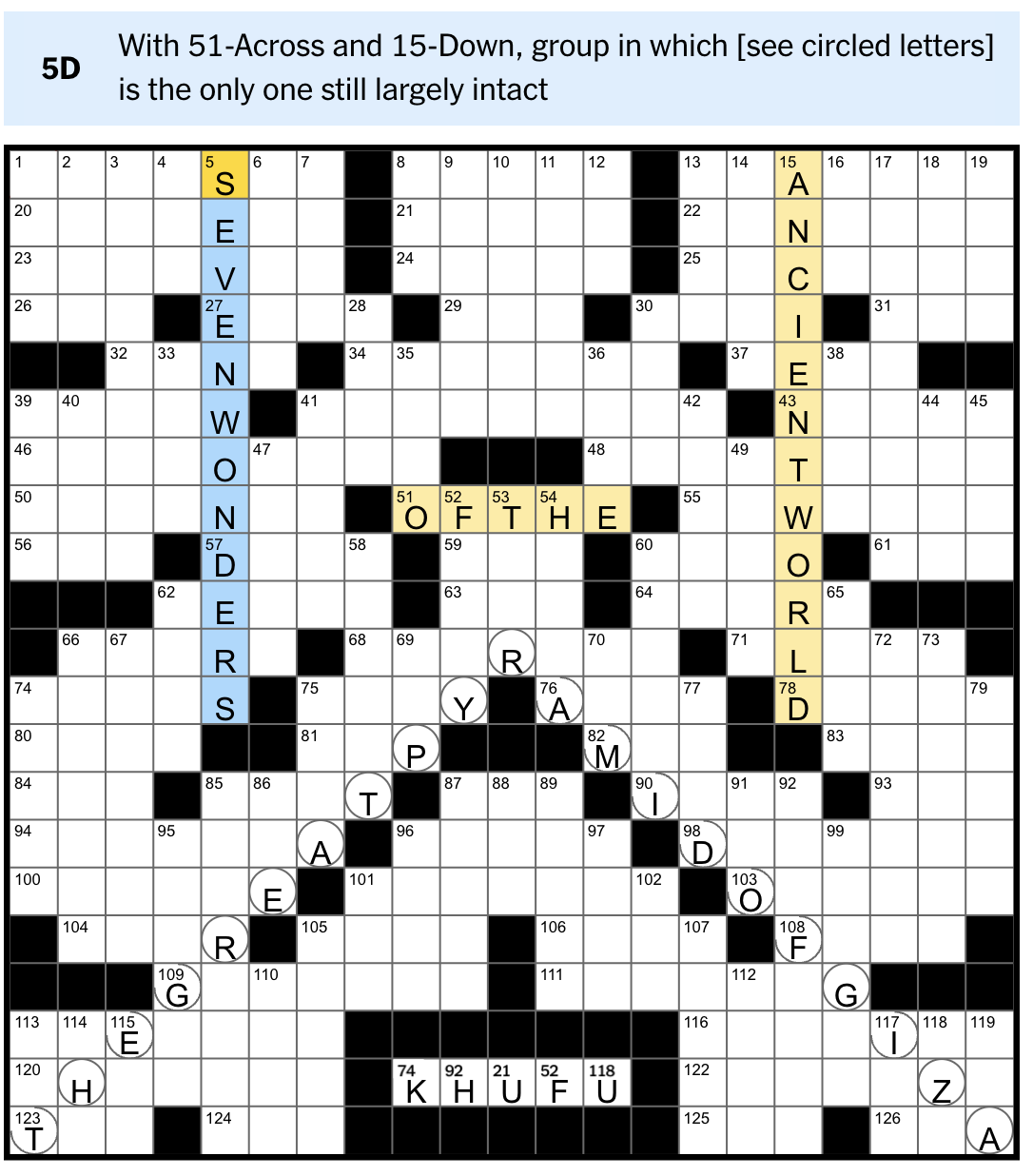
The rebus (exceptions to the rules)
Although you normally fill each blank square with a single letter, there are sometimes exceptions. An exception to this rule is known as a rebus. From this NYT article: “A rebus can be a letter, number or symbol that represents a word, but in many crosswords, the rebus will be a word or group of letters that need to be written inside a single square.”
Some examples of this:
- In the December 1, 2011 puzzle, the rebus “JACK” was used at the end of “LUMBERJACK” and at the start of “JACKSTRAW”:
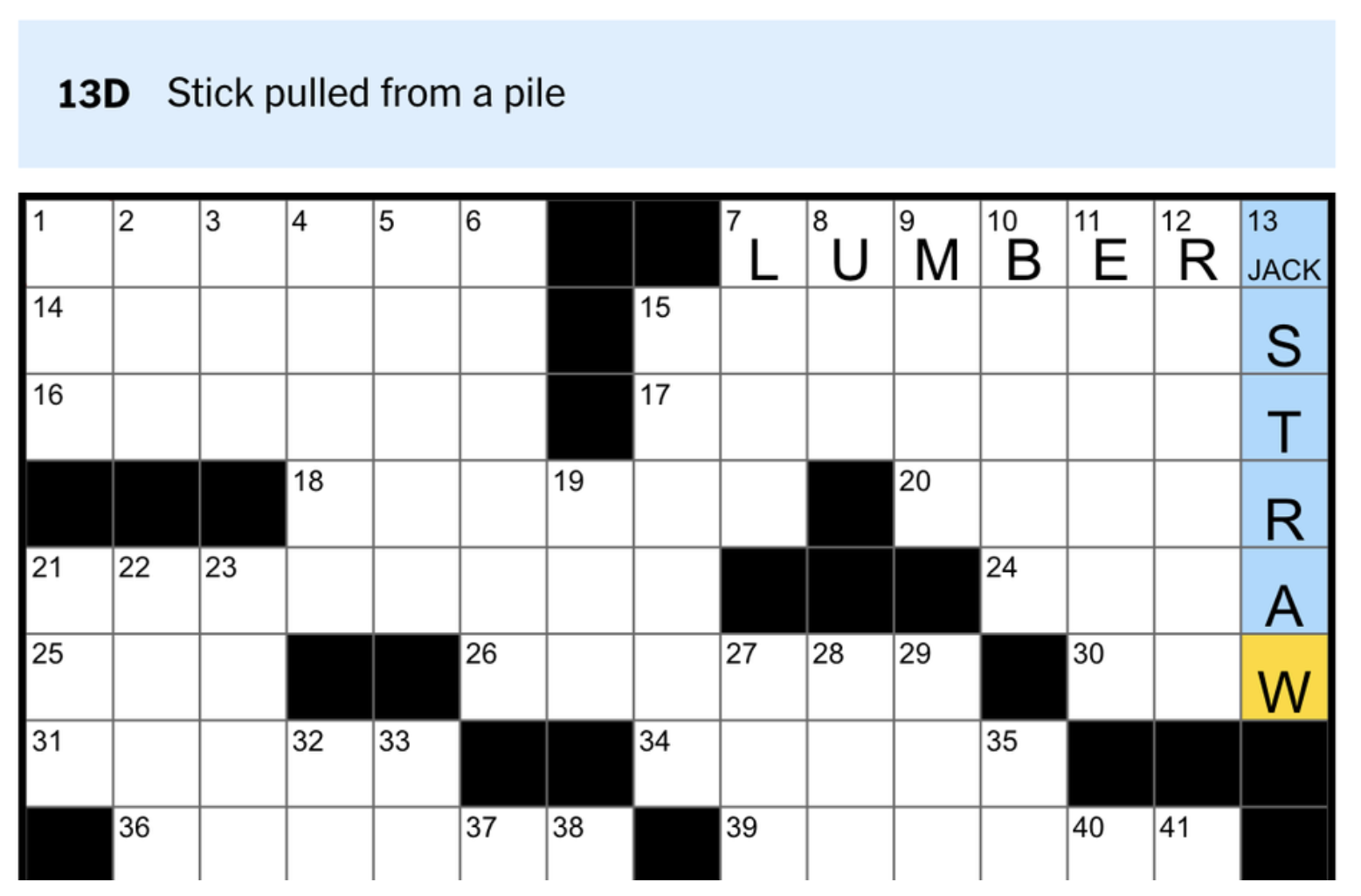
- In the January 1, 2021 puzzle, 4 numbers were part of some answers; those 4 numbers were “2021”, so they held a special meaning for this day’s puzzle:

Tricky ones (out-of-distribution)
Some of puzzles can be quite tricky, but are immensely satisfying once you figure it out. This is especially true on Thursdays, which is my favourite puzzle day, where there is always some “trick” to solving the puzzle. Solving these really forces you to go “out-of-distribution” for what a standard “grid of words” looks like, requiring all the skills mentioned above, and more! Each of these is also very unique, so it’s not really something you can imagine “preparing” for, other than solving lots of puzzles and being creative!
Here are a few recent ones I worked on that I thought were super fun and challenging (most of these are Thursday puzzles):
Cross your t’s
The Feburary 3, 2022 puzzle was my introduction to Thursday puzzles. This was one of the first ones I worked on and could not figure out many of the clues, and what’s more, I couldn’t even understand the answers when I revealed them!
The “Key lime” clue suggested to me this had something to do with pies… but it was a pretty long answer so wasn’t sure…
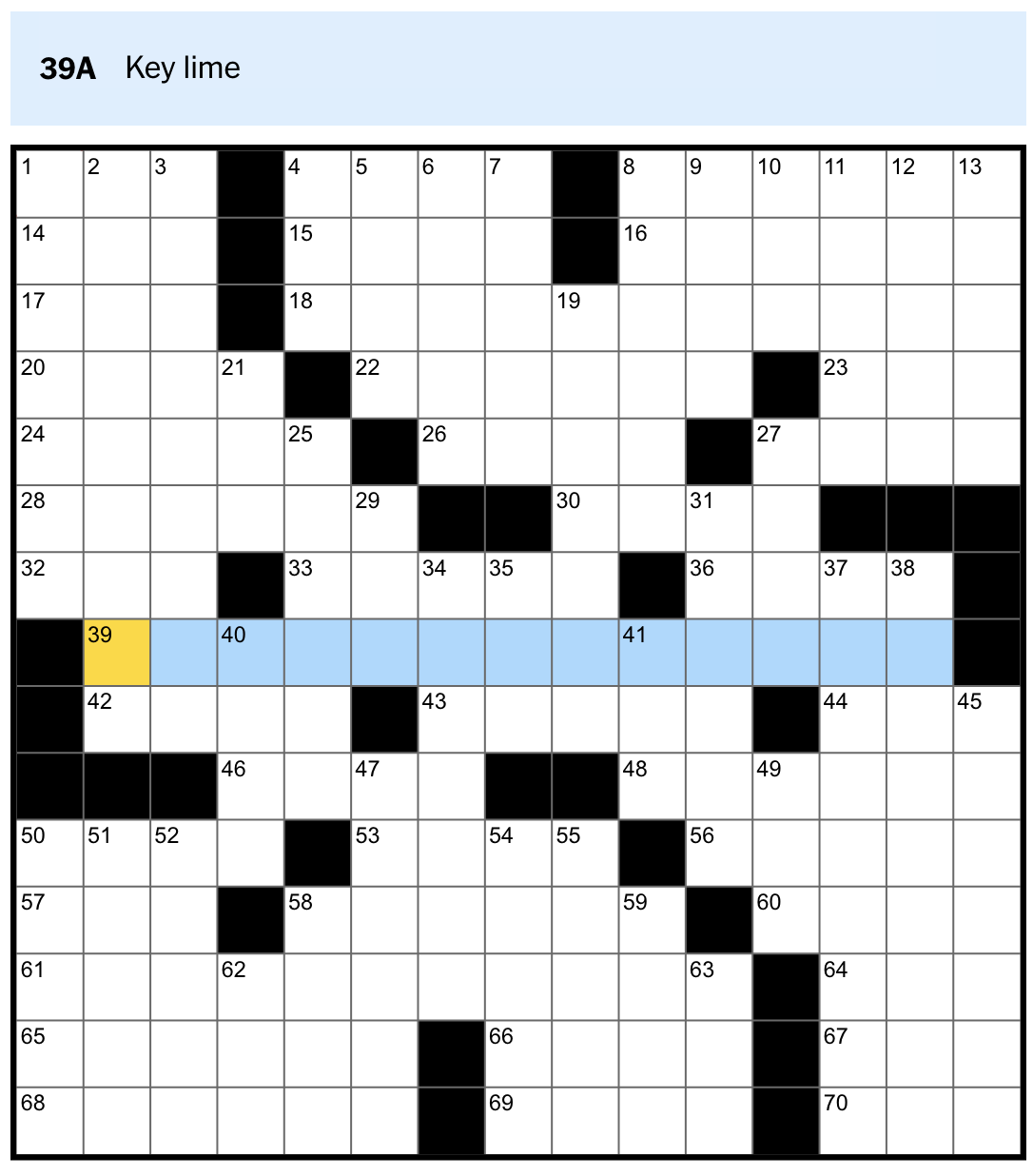
This clue really confused me, “many homes” don’t usually have intravenous devices in them… or does IV mean 4?
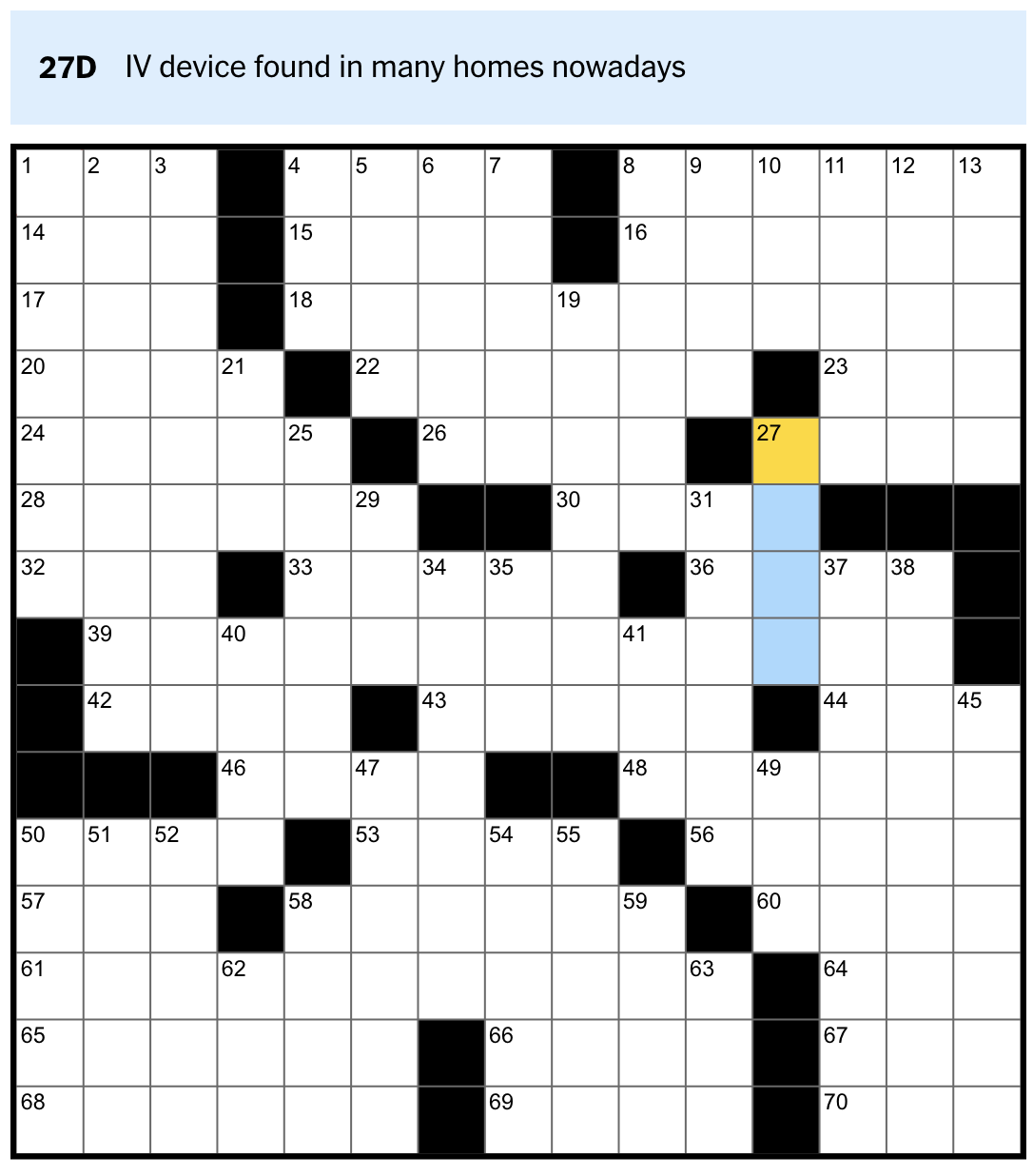
It turns out the trick is solving this clue:
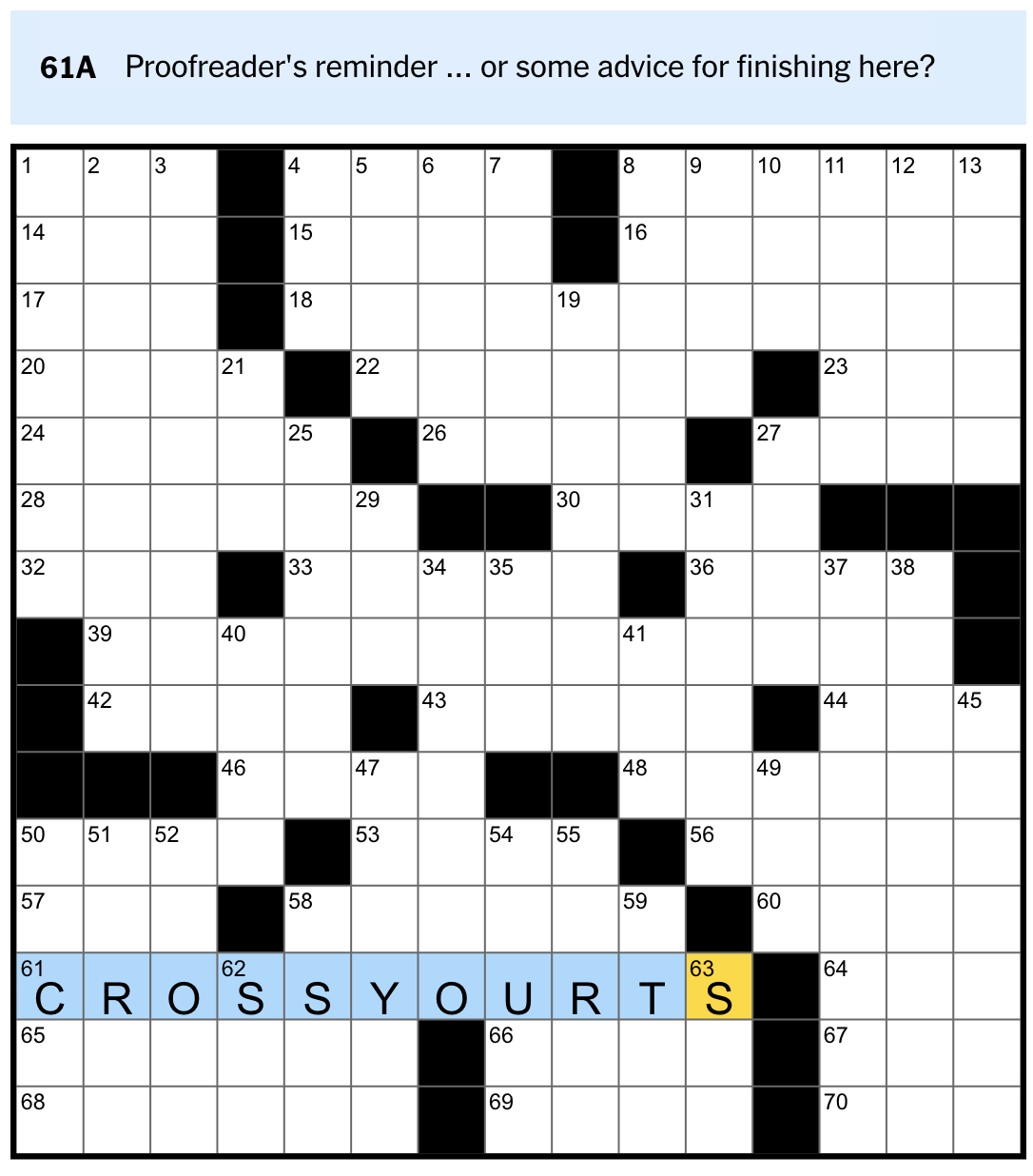
“Cross your t’s”! This means that “Key lime” should really have been “Key time” and the answer was MOMENTOFTRUTH, while “IV” should realy have been “TV” and the answer was ROKU (which is another one of the Crosswordese, by the way).
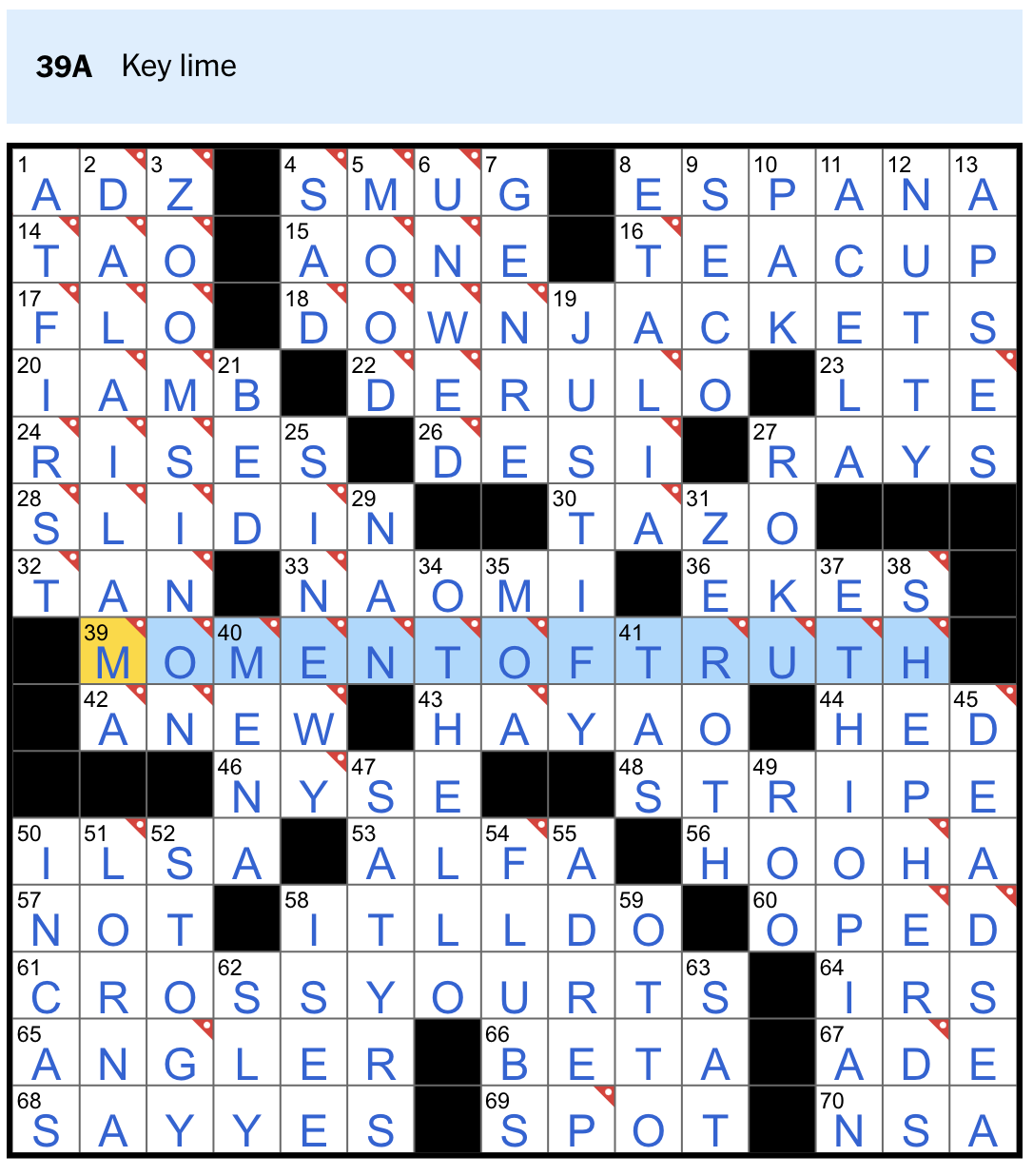
Letter sounds
The February 24, 2022 puzzle had letter sounds as part of the answer. Was quite tricky to get but once you got one, the other ones were simplified quite a lot!
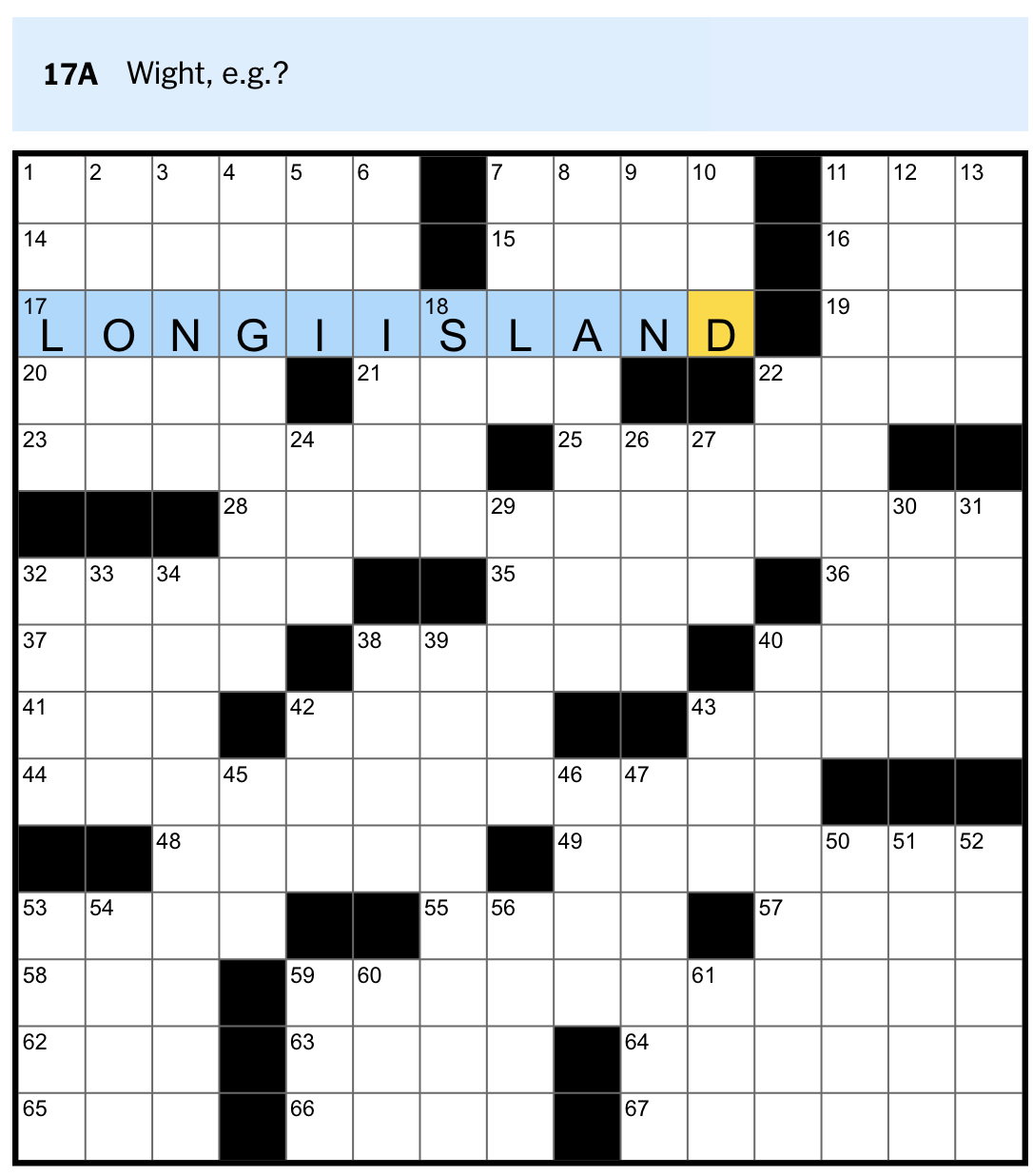
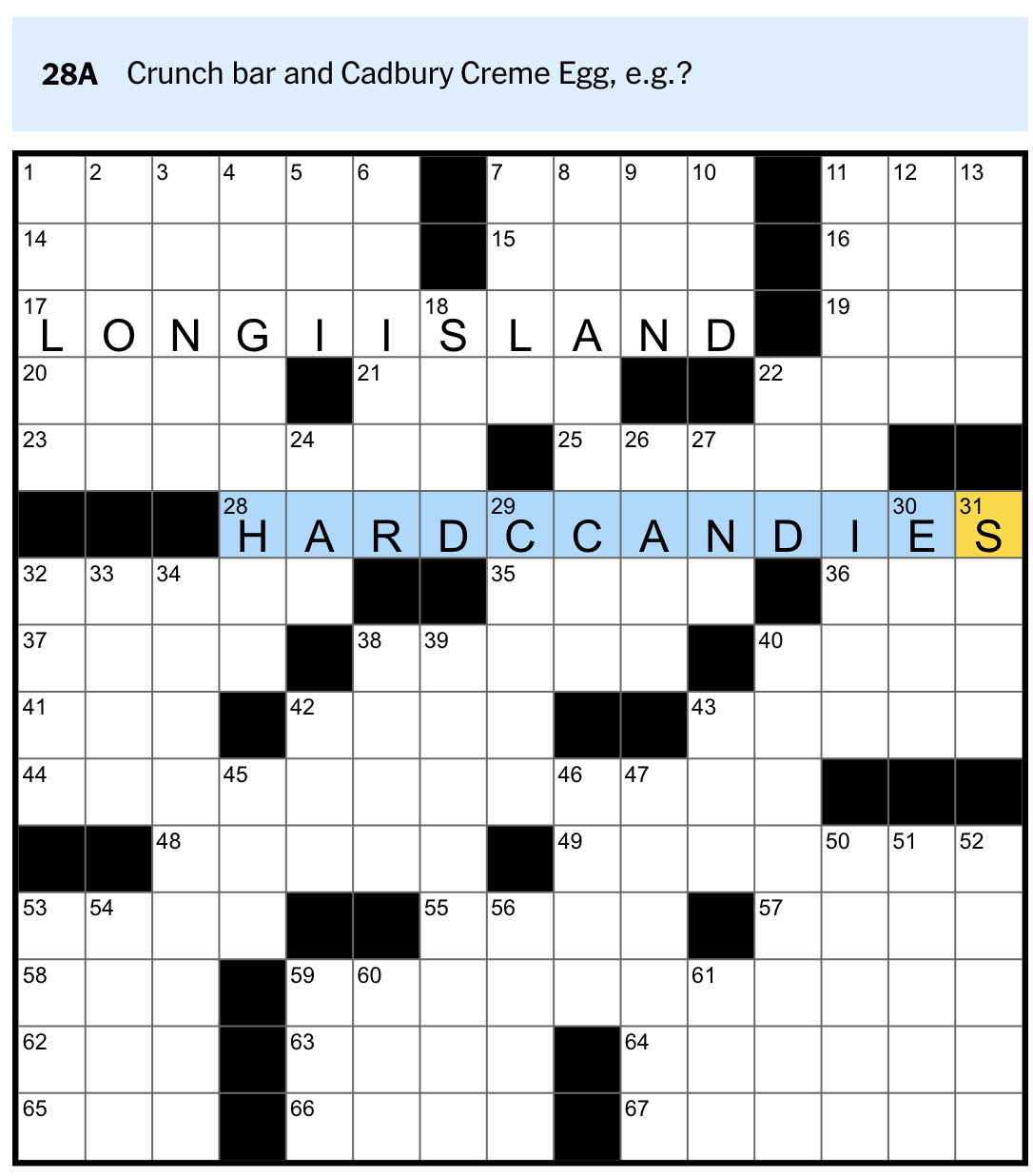
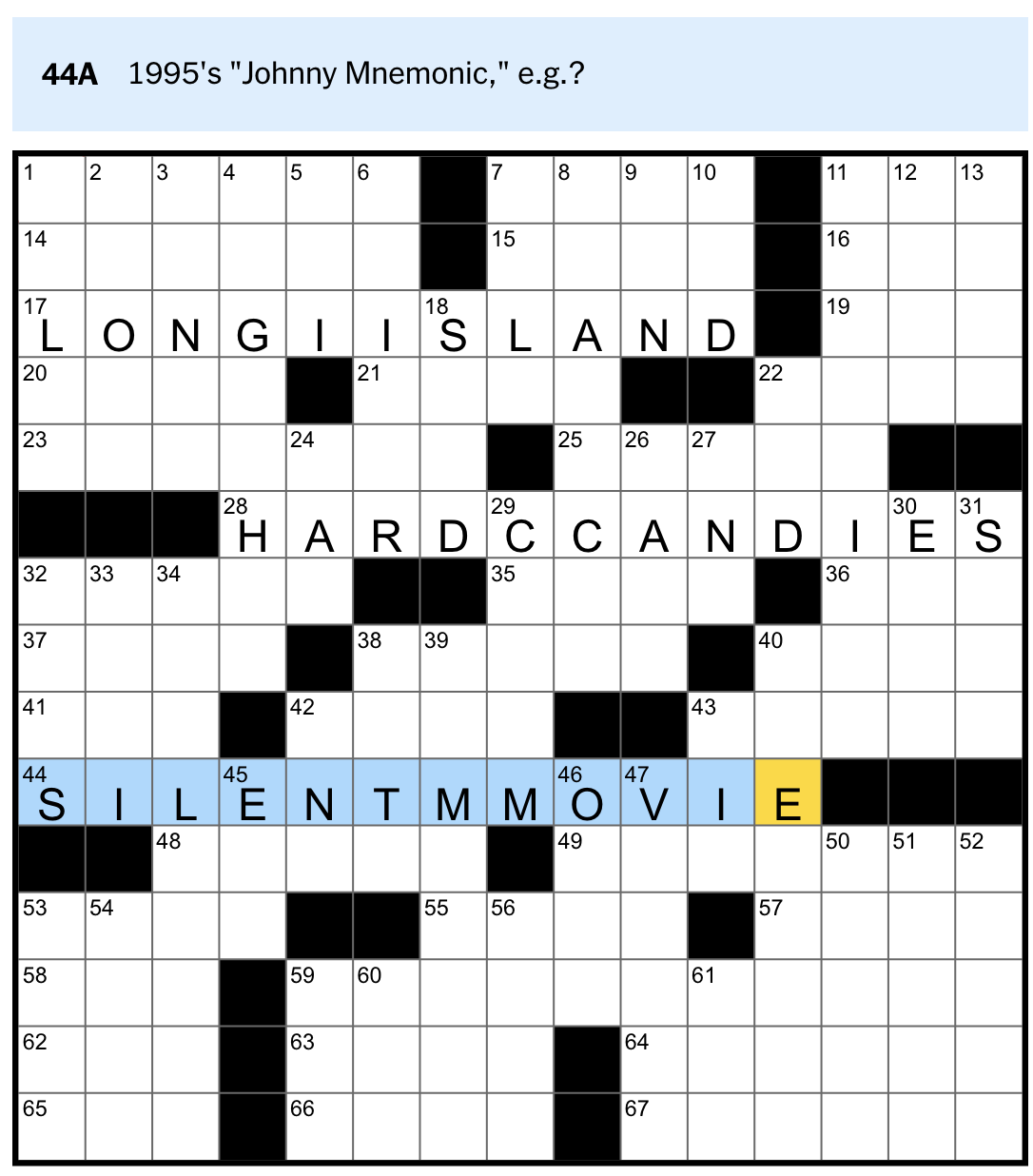
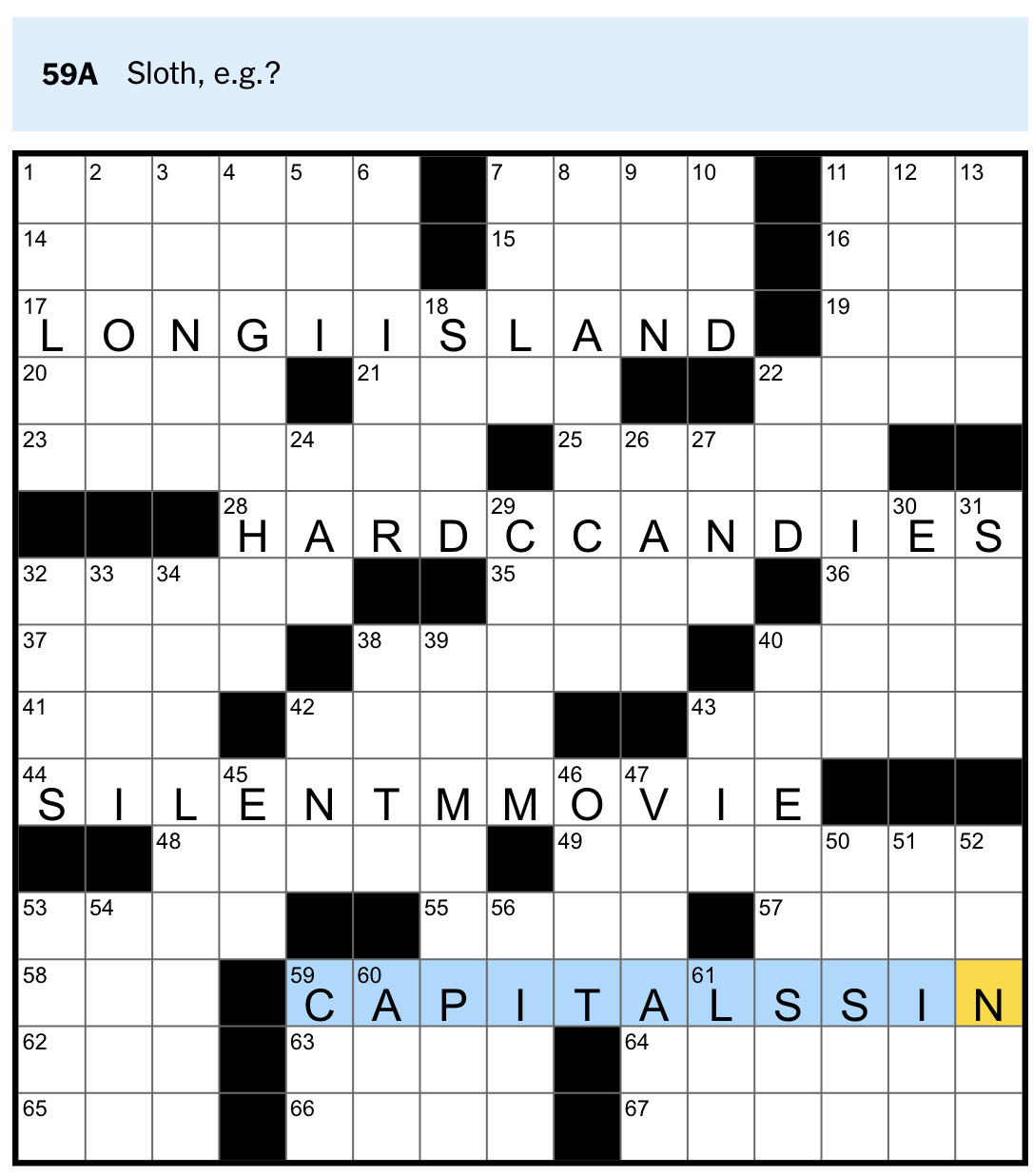
Just add water
The March 3rd, 2022 was very clever. The images below reveal the answers to four clues, which seem to be nonsensical…
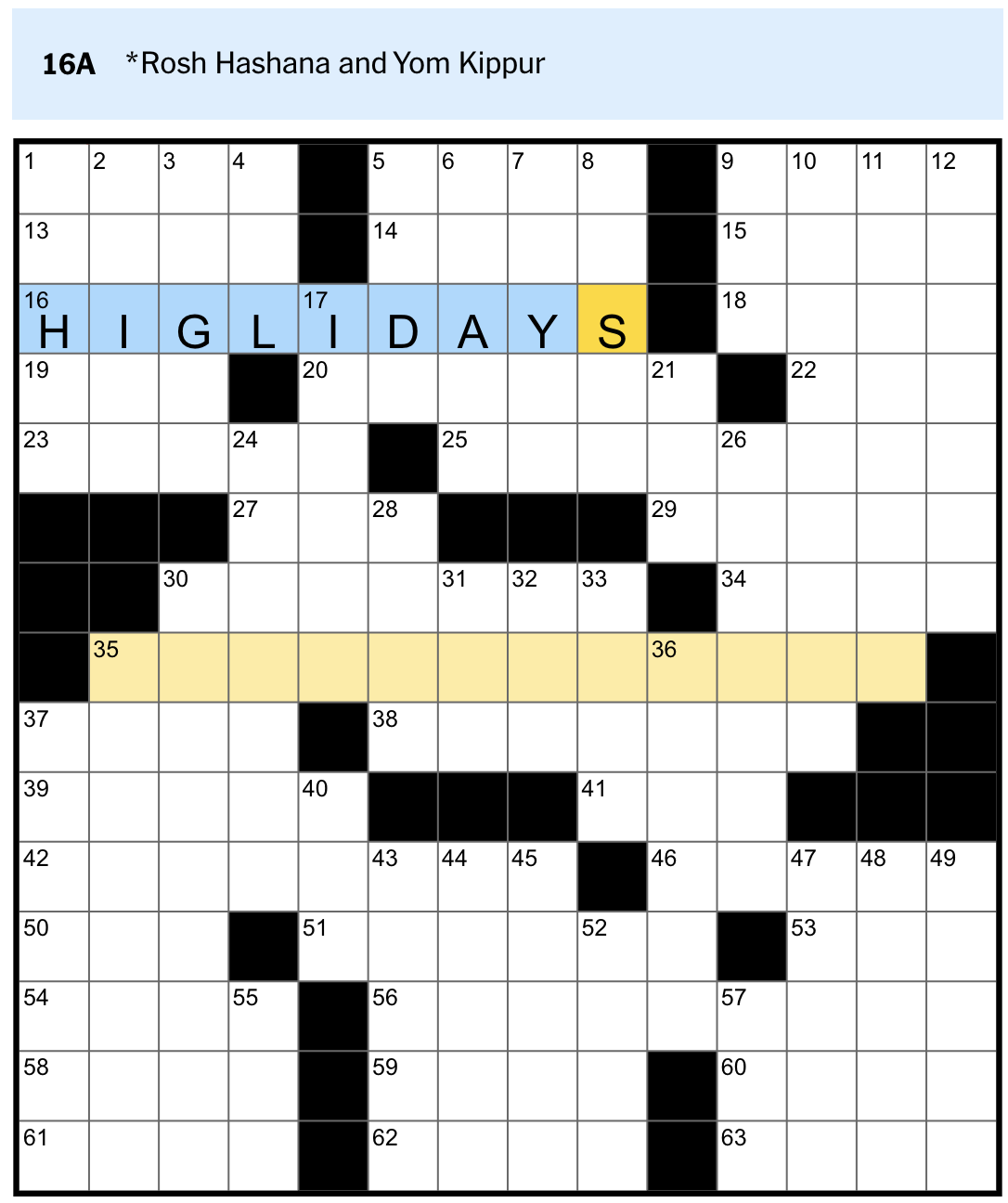
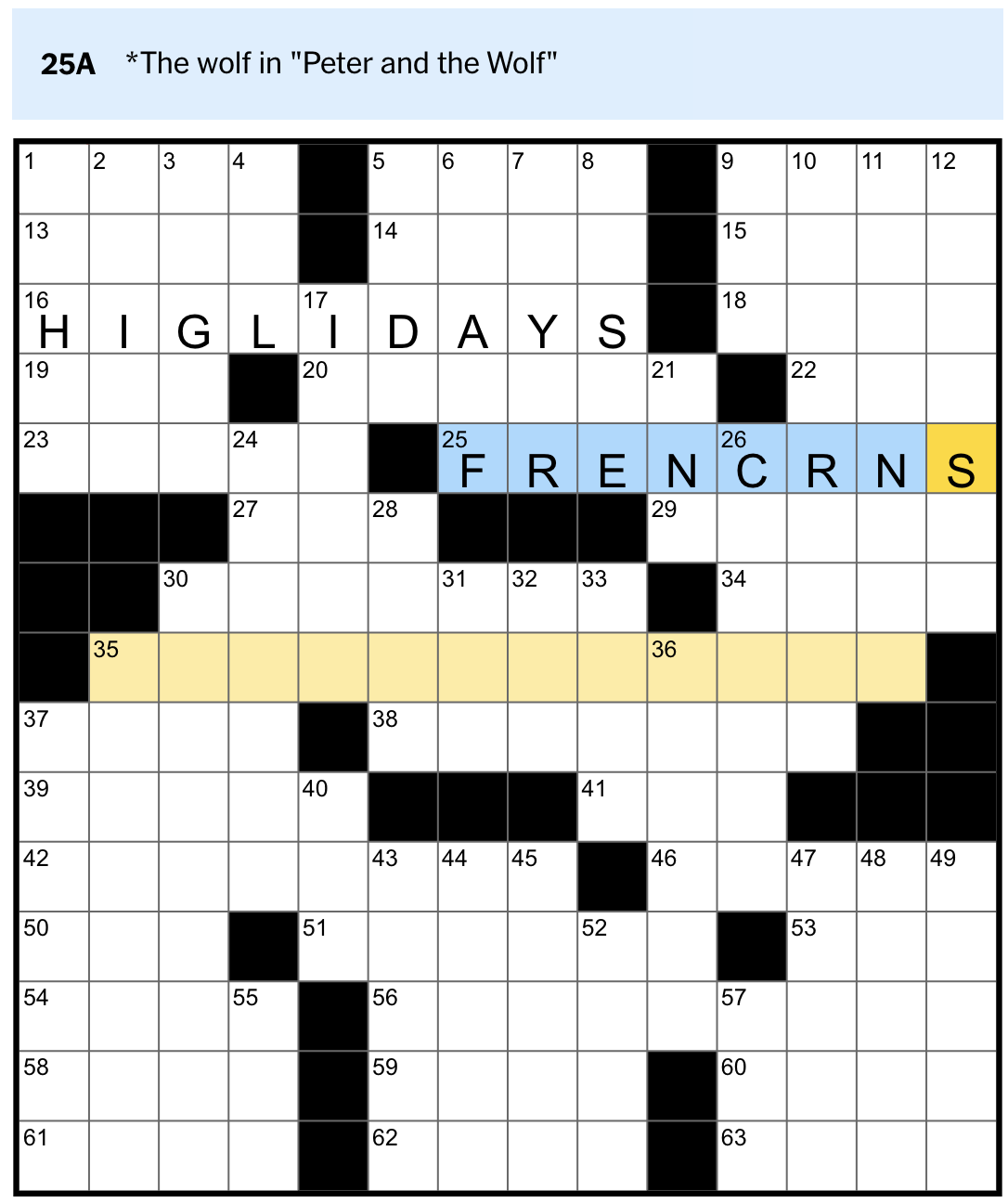
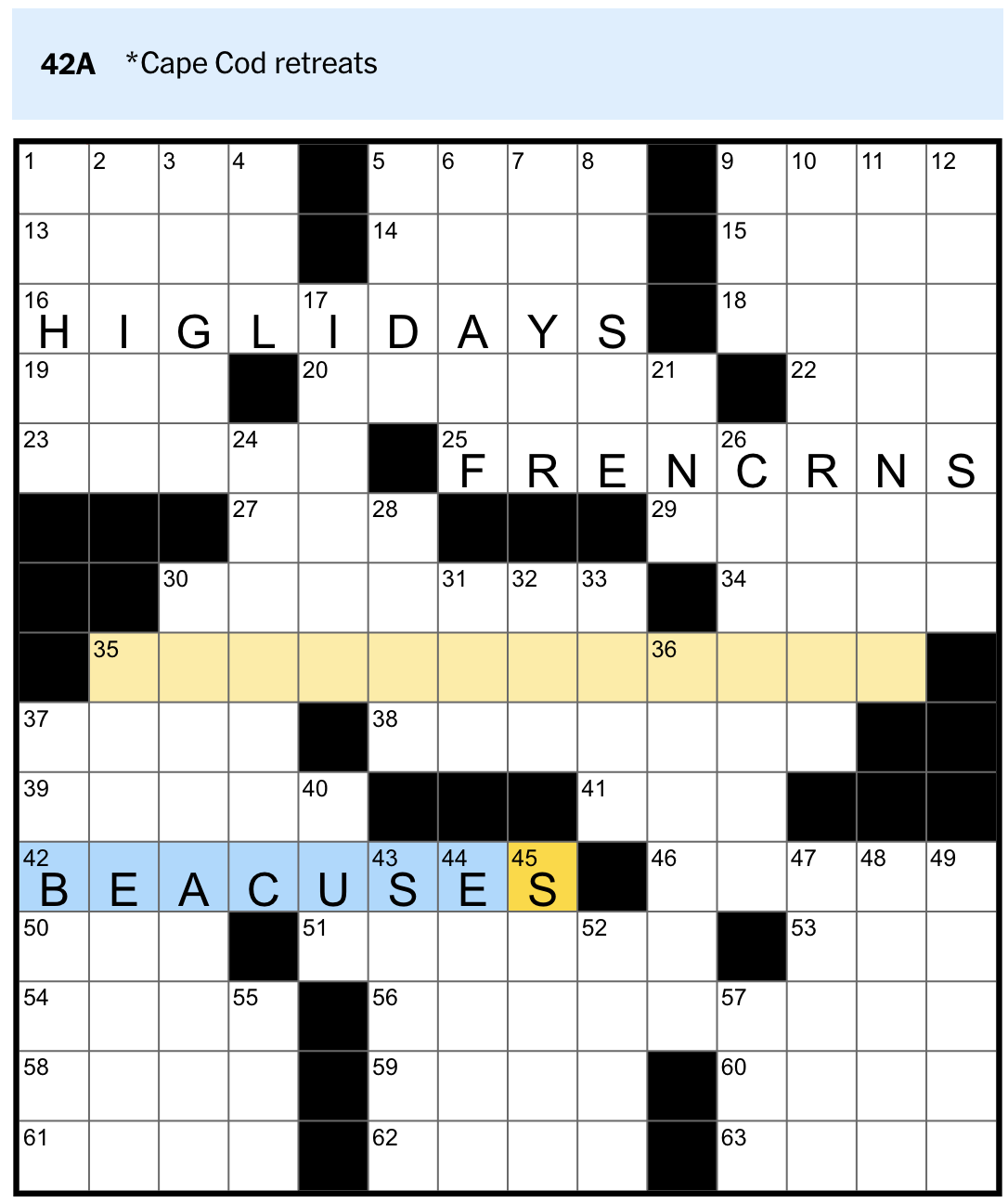
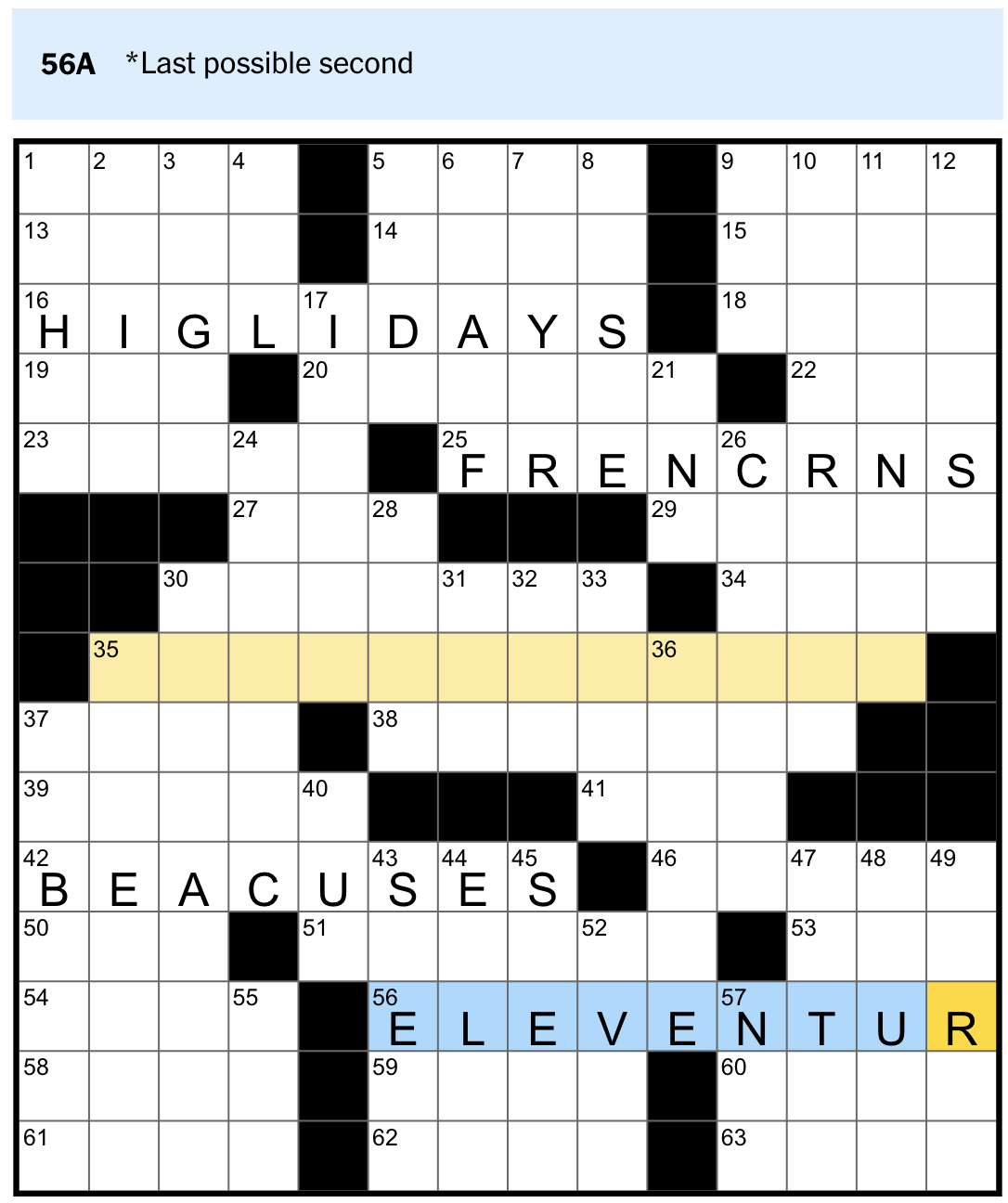
But when you solve the unifying clue, they make sense! Figuring out how is left as an exercise to the reader 😉.
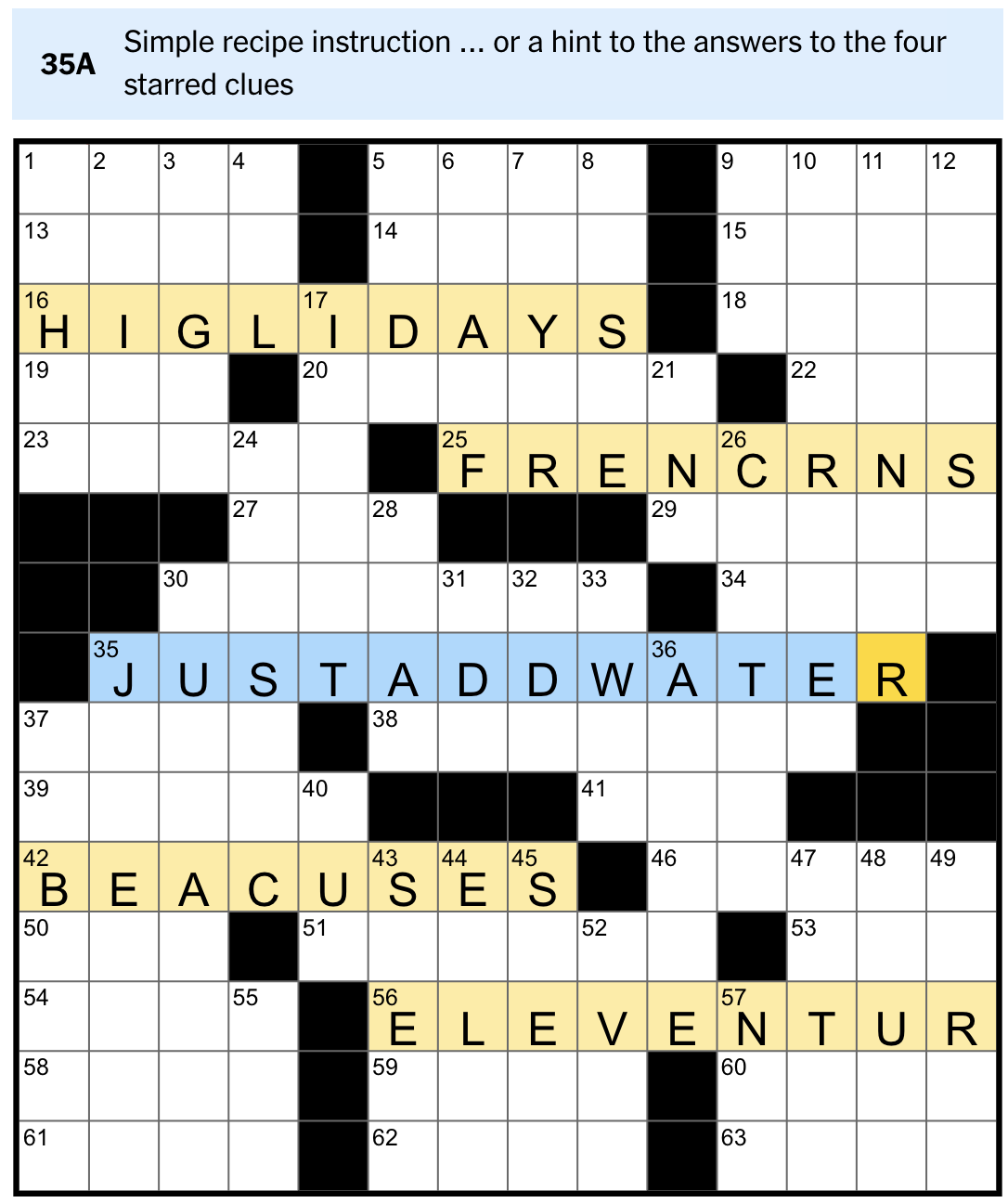
Raise the bar
The March 24, 2022 is another one where I had to get my friend Ralph to explain the answers to me. This one used a rebus: BAR:
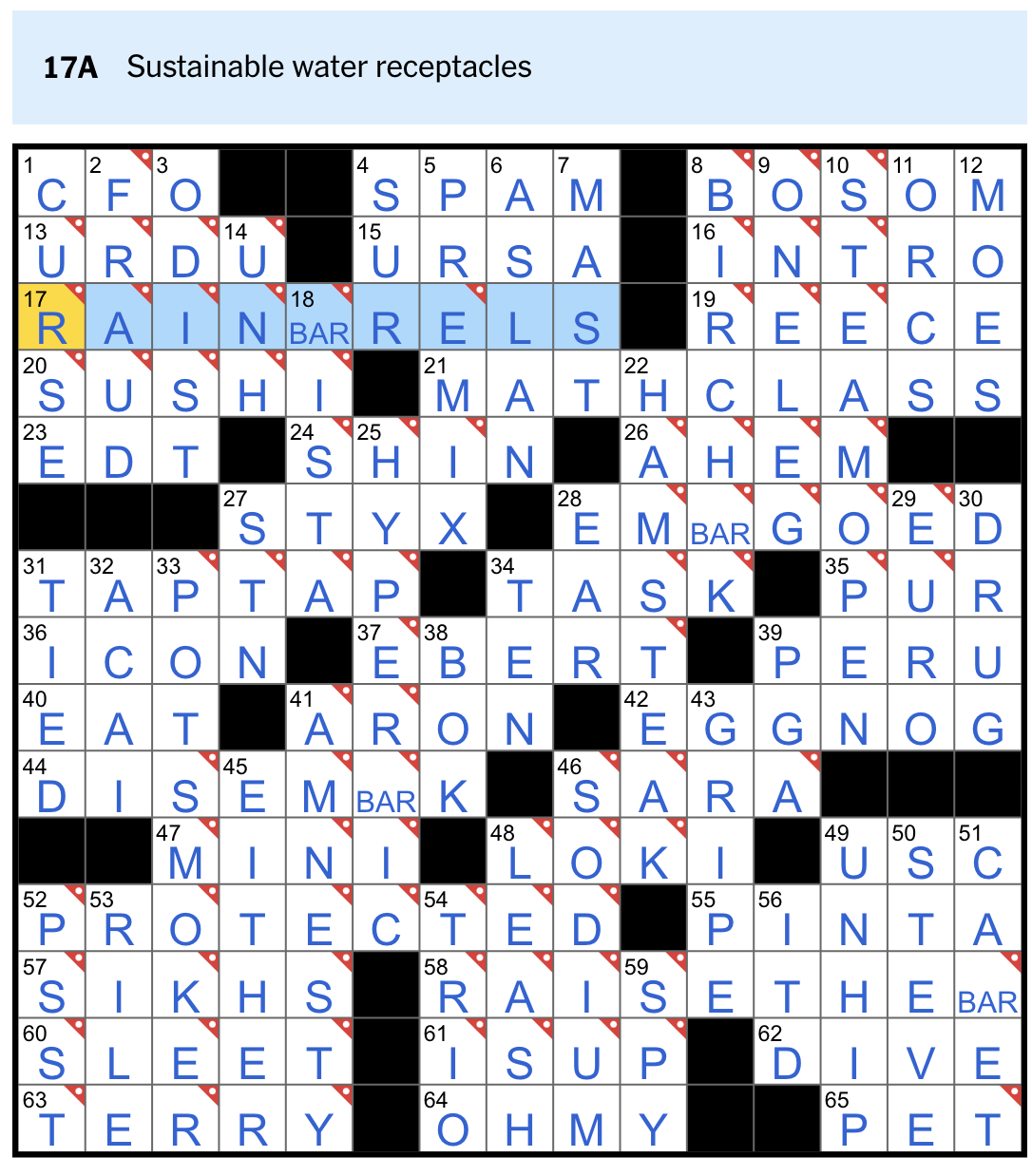
But I looked at some of the other answers, they didn’t quite make sense (e.g. “Sushi” isn’t a place):
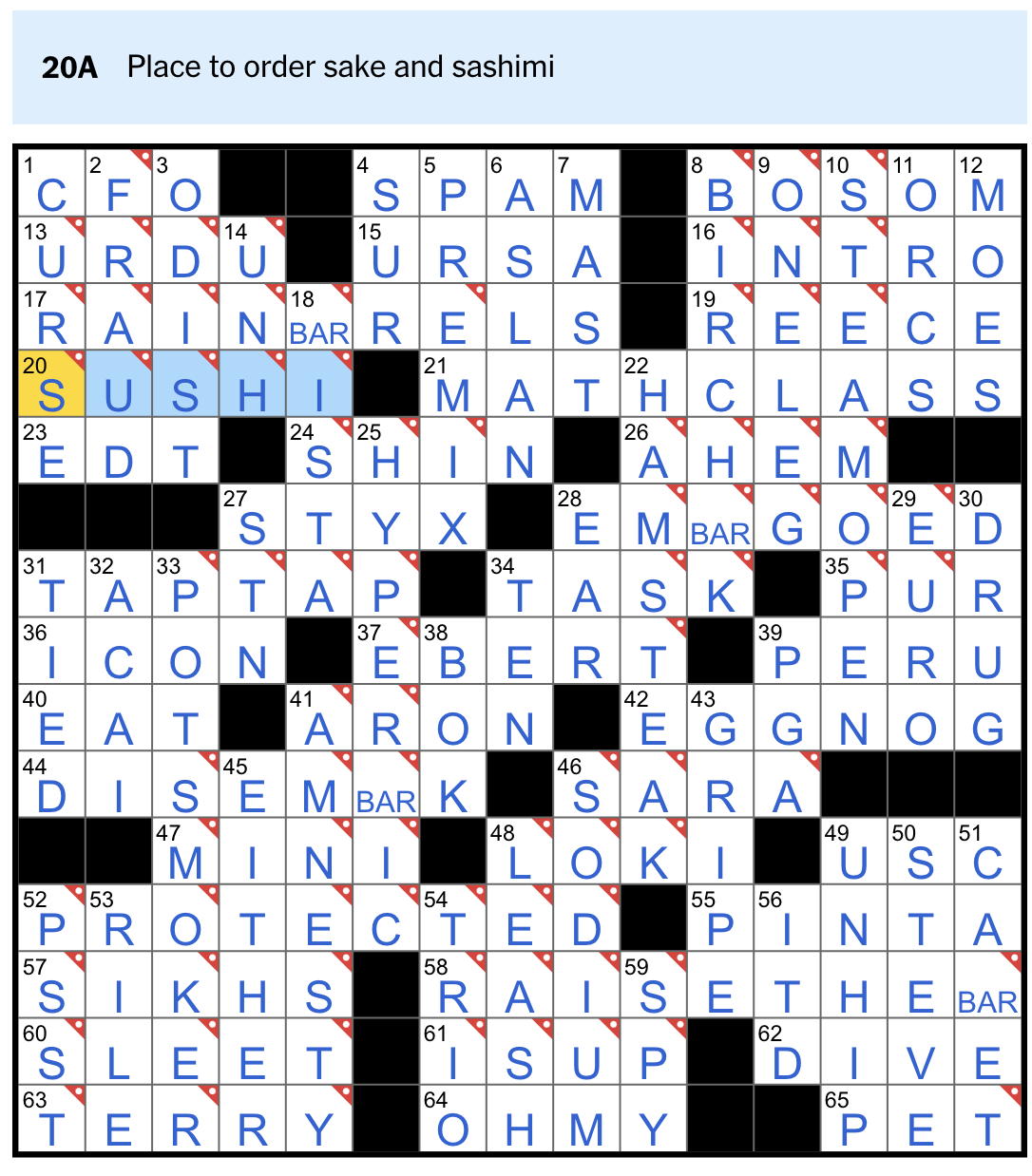
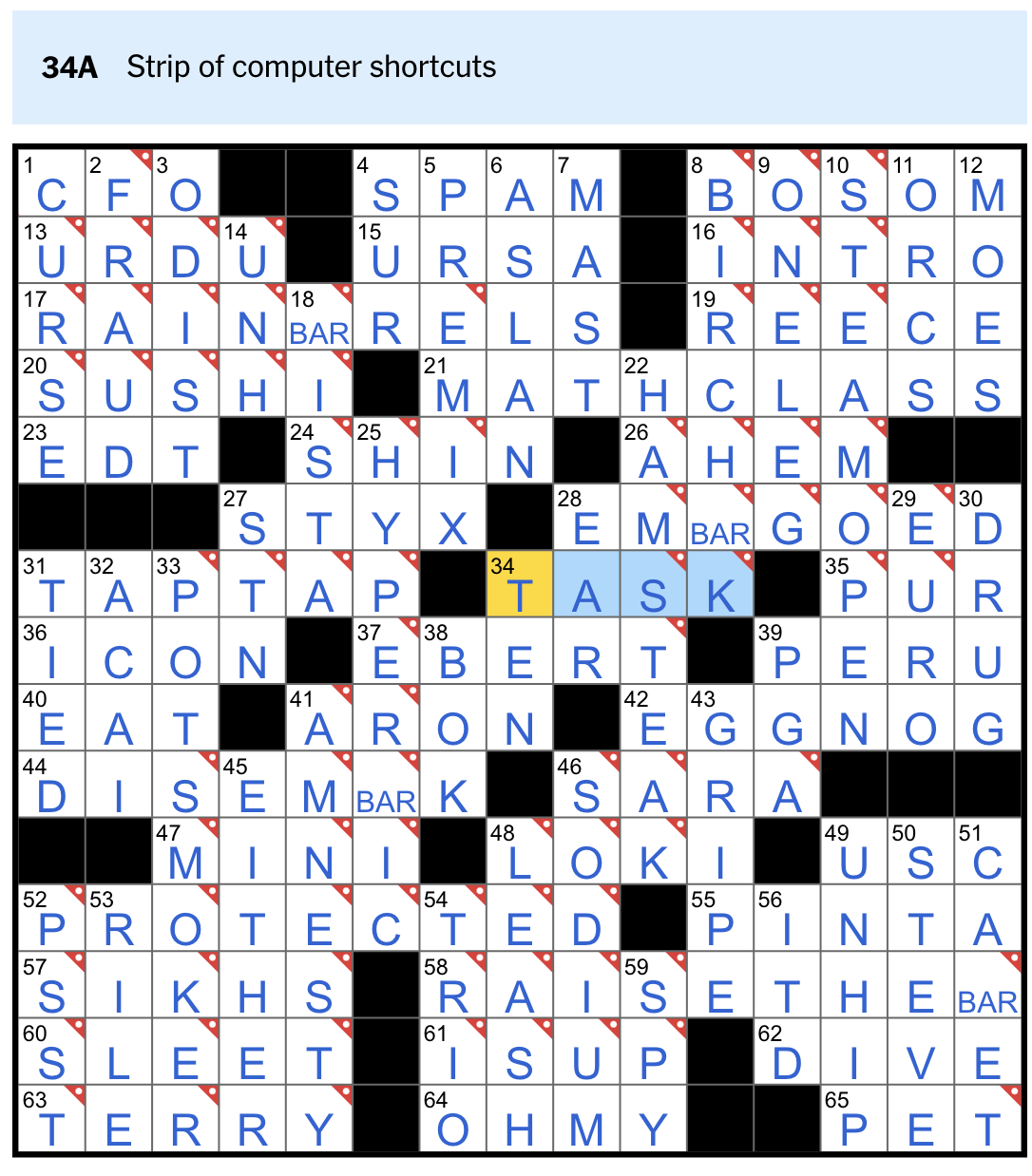
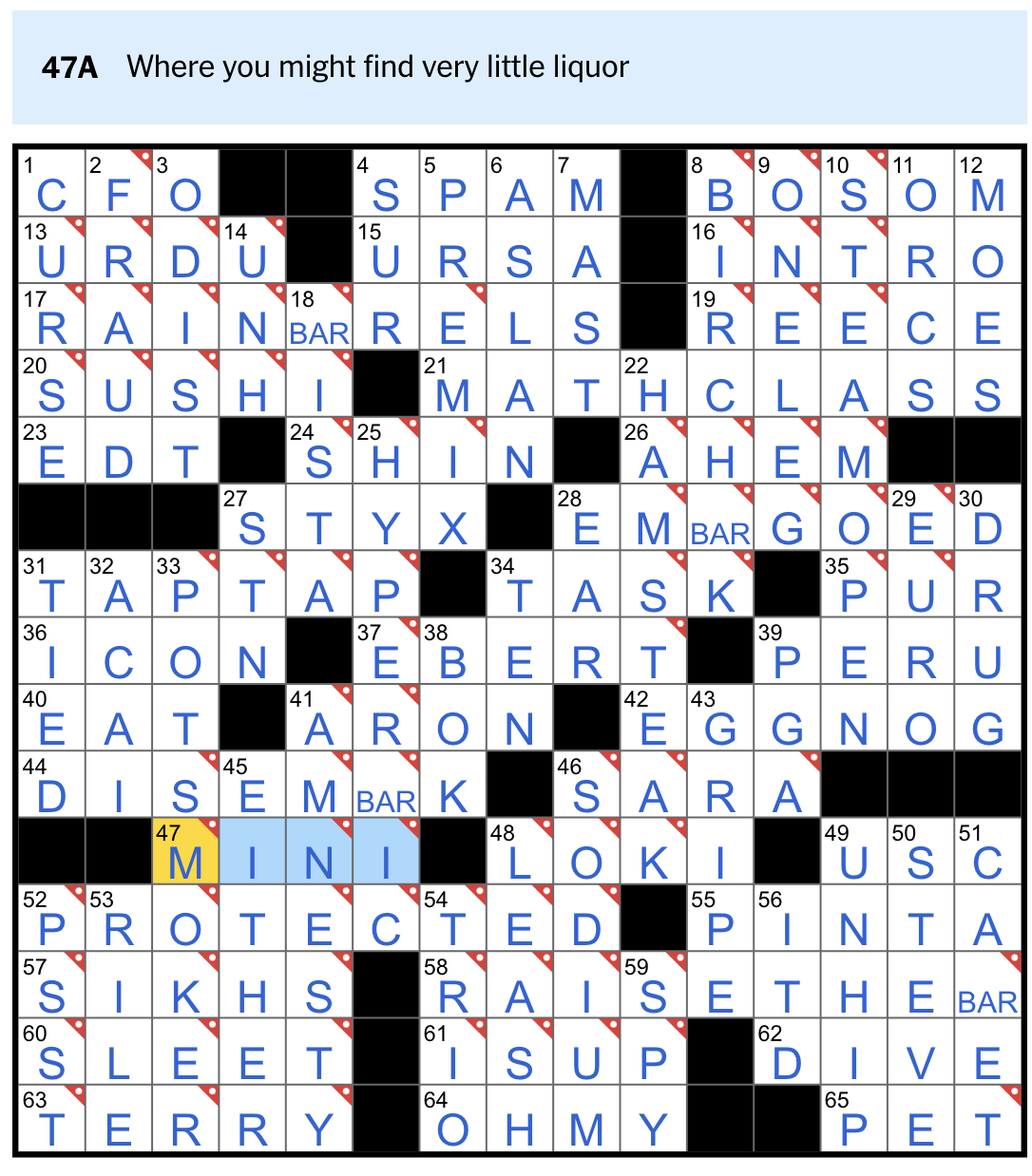
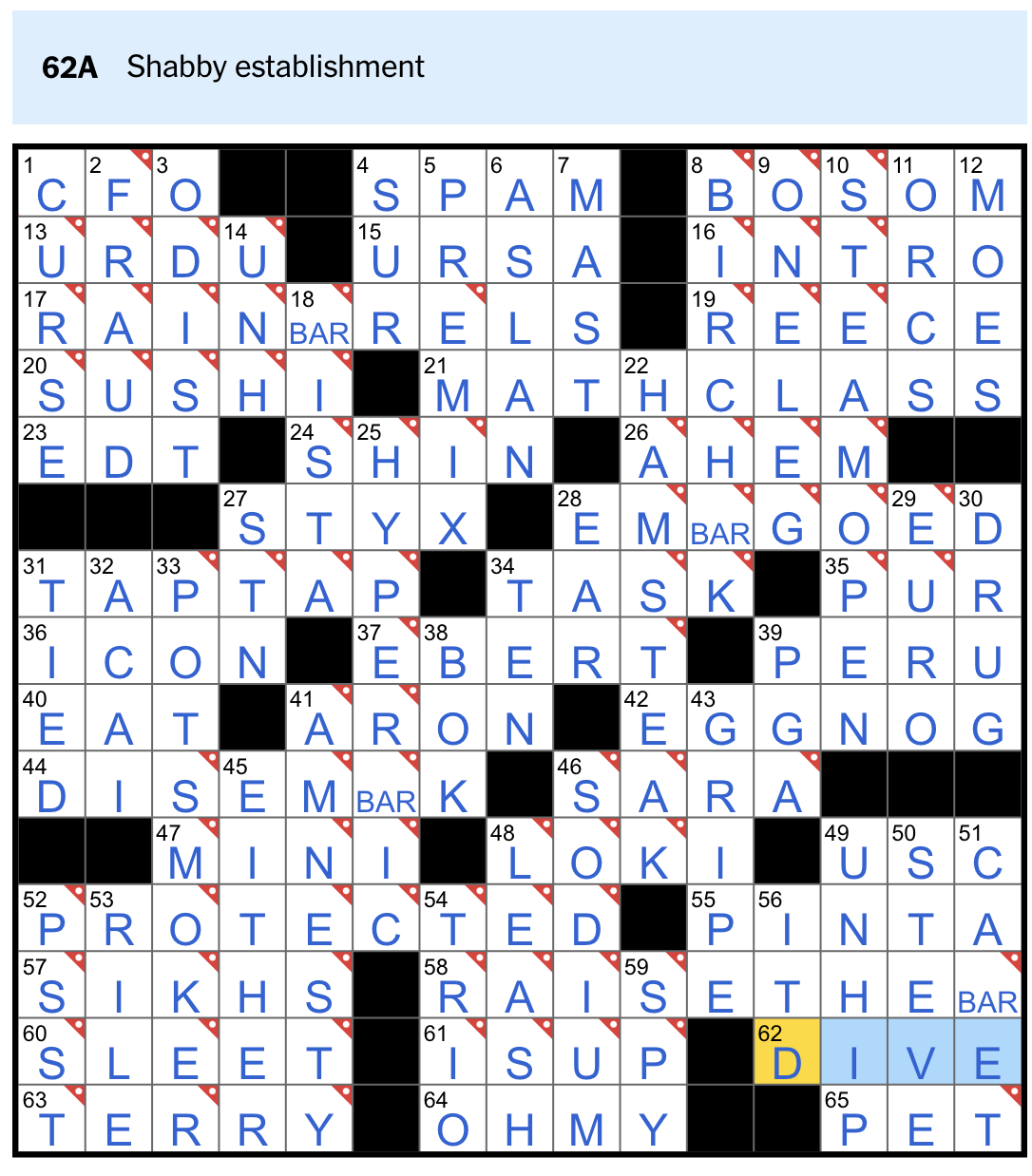
However, “raise the bar” holds the key piece. The answers to the 4 clues above actually include the BAR rebus above: hence, raise the bar! So this puzzle wasn’t just hard because it included a rebus, but the rebus was part of the answers below it! 🤯
A challenge for Machine Learning?
I hope this post has made it clear that crossword puzzles test all sorts of cognitive abilities, and having a model/system that can solve them would be truly remarkable. And maybe it can be done! But at that point, my question would be: can it do anything else?
If a model/system can solve crossword puzzles, can we say it’s “intelligent”? Can we say it’s “AGI”? If another model/system can do lots of really impressive things at super-human level but fail miserably at solving crossword puzzles (even the Monday ones), does it mean it’s not “AGI”?
Taking a step back, my personal opinion is that AGI is an ill-defined goalpost, and I don’t personally understand why so many in our field are so focused on “reaching” it. The ML models/systems we’ve been developing over the years are incredible enough and have allowed us to do so many things that were previously thought impossible.
But most of these achievements are focused on a pretty specific task and can’t do much else. And that’s fine by me! I think ML models/systems that are developed for solving/improving specific objectives can have enormous benefits for society (and are likely simpler to diagnose/understand to ensure we’re building/deploying them in a fair and ethical way).
Coming back to crosswords: My buddy Ralph is so much better than me at solving crosswords, does that mean he’s more “intelligent” than me? Maybe, but I don’t think so. I just think he’s better at solving crosswords than me. Period. He probably can’t prove why the Bellman update operator converges to a fixed point but I can, so does that mean I’m more intelligent than him? No! We have our strengths and our weaknesses.
An autamated system that can solve crosswords and nothing else is not “AGI”. It’s just an automated system that can solve crosswords. I don’t mind if people choose to call it “intelligent” or not, from my perspective it’s just an automated system that can solve crosswords. And that’s impressive!
One final thought to finish this section: the reason people like Ralph and I do crosswords is not because they make us “smarter” or they help us become better employees… we do them because we find them super fun and enjoy them! This is a part of being human that is not present in any ML system/model (no, I don’t think things like intinsic reward are anywhere near human-style “fun” or “curiosity”… they’re just an extra numerical function to optimize that we made up).
Maybe it’s just that we don’t really understand human enjoyment well enough to embed them into ML agents. But once again, I personally don’t really see much of the point of working towards that… I’m happy to continue beefing up my crossword-solving skills (because it’s fun for me), while continuing to develop a better theoretical and empirical understanding of reinforcement learning agents in my research (also because I find it fun, interesting, and hopefully useful).
I hope this post at least got you interested in crosswords (if you weren’t already) and you can “join the club”. And who knows, maybe it will become a Turint-test-of-sorts and some of you will prove my rant totally incorrect.
A machine learning crossword
To accompany this post, I made my own crossword puzzle! All of the answers in this puzzle are machine learning; well, all but one (leave-one-out?).
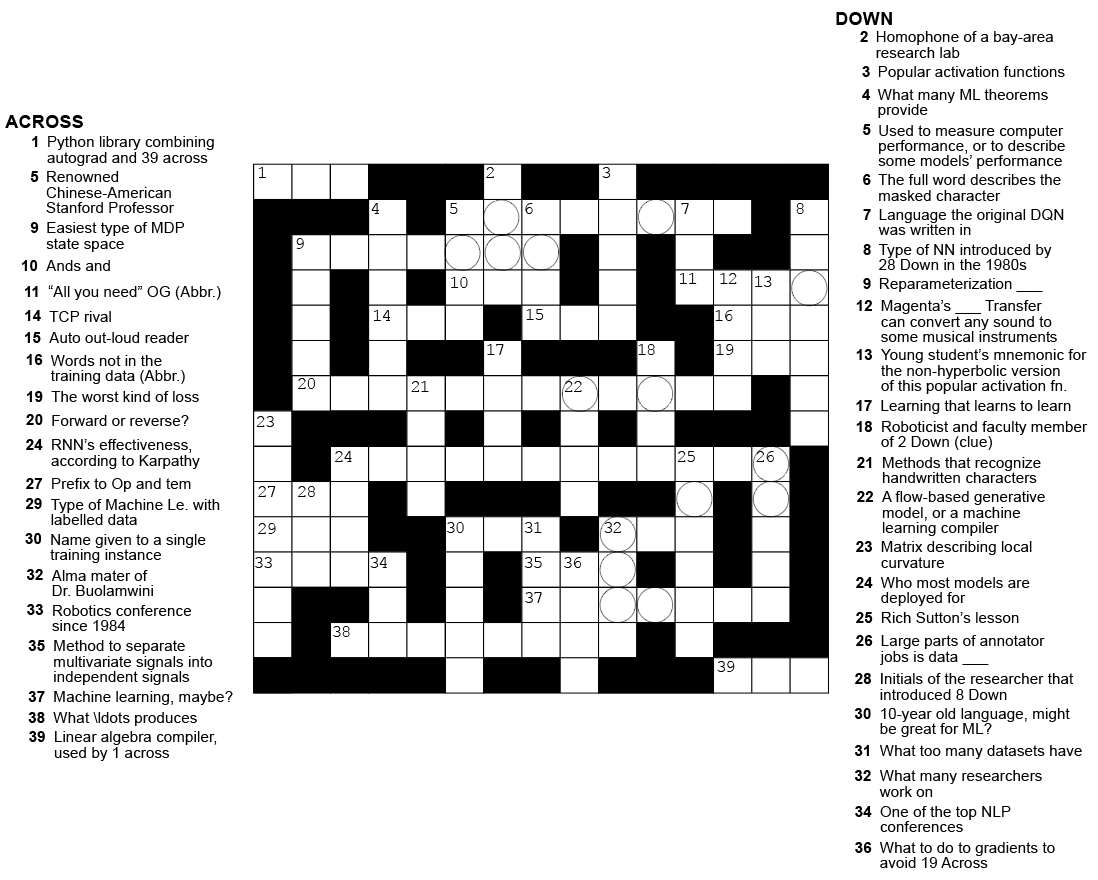
Here’s a higher-res PDF version of it.
Prizes! Prizes! Prizes!
If you manage to solve this puzzle, send me your solution via email or twitter. I will donate money to the first 4 people to solve it, the charity can be chosen by the winner (or I can choose one for them). Google (my employer) will match donations, so your chosen charity will actually get twice the amount indicated below! All amounts are in Canadian dollars (sorry, eh).
- 1st prize: $440
- 2nd prize: $390
- 3nd prize: $225
Have fun!
comments powered by Disqus
